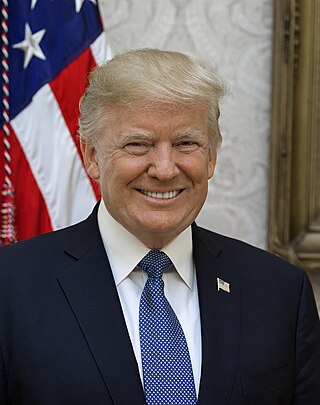
Donald Trump
Donald John Trump is an American politician, media personality, and businessman who served as the 45th president of the United States from 2017 to 2021.
President Donald Trump declares the COVID-19 pandemic to be a national emergency in the United States.

Donald John Trump is an American politician, media personality, and businessman who served as the 45th president of the United States from 2017 to 2021.

The COVID-19 pandemic in the United States is a part of the worldwide pandemic of coronavirus disease 2019 (COVID-19) caused by severe acute respiratory syndrome coronavirus 2 (SARS-CoV-2). In the United States, it has resulted in 98,962,019 confirmed cases with 1,081,412 all-time deaths, the most of any country, and the twentieth-highest per capita worldwide. The COVID-19 pandemic ranks first on the list of disasters in the United States by death toll; it was the third-leading cause of death in the U.S. in 2020, behind heart disease and cancer. From 2019 to 2020, U.S. life expectancy dropped by 3 years for Hispanic and Latino Americans, 2.9 years for African Americans, and 1.2 years for white Americans. These effects have persisted as U.S. deaths due to COVID-19 in 2021 exceeded those in 2020.

A state of emergency is a situation in which a government is empowered to be able to put through policies that it would normally not be permitted to do, for the safety and protection of its citizens. A government can declare such a state during a natural disaster, civil unrest, armed conflict, medical pandemic or epidemic or other biosecurity risk. Justitium is its equivalent in Roman law—a concept in which the Roman Senate could put forward a final decree that was not subject to dispute yet helped save lives in times of strife.
Breonna Taylor is killed by police officers who were forcibly entering her home in Louisville, Kentucky; her death sparked extensive protests against police brutality.

Breonna Taylor, a 26-year-old African-American woman, was fatally shot in her Louisville, Kentucky apartment on March 13, 2020, when at least seven police officers forced entry into the apartment as part of an investigation into drug dealing operations. Three Louisville Metro Police Department (LMPD) officers—Jonathan Mattingly, Brett Hankison, and Myles Cosgrove—were involved in the shooting. Taylor's boyfriend, Kenneth Walker, was inside the apartment with her when the plainclothes officers knocked on the door and then forced entry. The officers said that they announced themselves as police before forcing entry, but Walker said he did not hear any announcement, thought the officers were intruders, and fired a warning shot at them. The shot hit Mattingly in the leg, and the officers fired 32 shots in return. Walker was unhurt but Taylor, who was behind Walker, was hit by six bullets and died. During the incident, Hankison moved to the side of the apartment and shot 10 bullets through a covered window and glass door. According to police, Taylor's home was never searched.
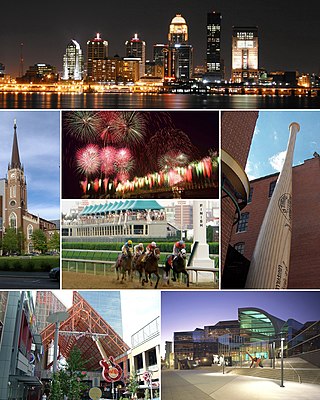
Louisville is the largest city in the Commonwealth of Kentucky and the 28th most-populous city in the United States. Louisville is the historical seat and, since 2003, the nominal seat of Jefferson County, on the Indiana border.

The Breonna Taylor protests are an ongoing series of police brutality protests surrounding the killing of Breonna Taylor. Taylor was a 26-year-old African-American woman who was fatally shot by plainclothes officers of the Louisville Metro Police Department on March 13, 2020. Police were initially given "no-knock" search warrant, but orders were changed to "knock and announce" before the raid. Taylor's boyfriend, Kenneth Walker, who was inside the apartment with her during the raid, said he thought the officers were intruders. He fired one shot, hitting officer Mattingly in the leg, and the officers fired 32 shots in return, killing Taylor.
The Ankara bombing kills at least 37 people.

The March 2016 Ankara bombing killed at least 37 people and injured 125. Of the 125 individuals who suffered injuries, 19 of them were seriously harmed. Several buildings were also damaged during the event, and a bus and many cars were reportedly completely destroyed.
Three gunmen attack two hotels in the Ivory Coast town of Grand-Bassam, killing at least 19 people.

On 13 March 2016, three Islamist gunmen opened fire at a beach resort in Grand-Bassam, Ivory Coast, killing at least 19 people and injuring 33 others.

Ivory Coast, also known as Côte d'Ivoire, officially the Republic of Côte d'Ivoire, is a country on the southern coast of West Africa. Its capital is Yamoussoukro, in the centre of the country, while its largest city and economic centre is the port city of Abidjan. It borders Guinea to the northwest, Liberia to the west, Mali to the northwest, Burkina Faso to the northeast, Ghana to the east, and the Gulf of Guinea to the south. Its official language is French, and indigenous languages are also widely used, including Bété, Baoulé, Dioula, Dan, Anyin, and Cebaara Senufo. In total, there are around 78 different languages spoken in Ivory Coast. The country has a religiously diverse population, including numerous followers of Christianity, Islam, and indigenous faiths.
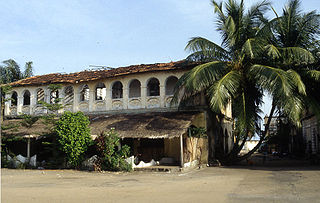
Grand-Bassam is a town in southeastern Ivory Coast, lying east of Abidjan. It is a sub-prefecture of and the seat of Grand-Bassam Department; it is also a commune. During the late 19th century, Grand-Bassam was briefly the French colonial capital of Ivory Coast. Because of its outstanding examples of colonial architecture and town-planning, and the juxtaposition of the colonial town with a traditional Nzema village, the historic center of Grand-Bassam was designated a UNESCO World Heritage Site in 2012.
Cardinal Jorge Mario Bergoglio was elected Pope Francis, making him the first Jesuit pope, the first from the Americas, and the first from the Southern Hemisphere.
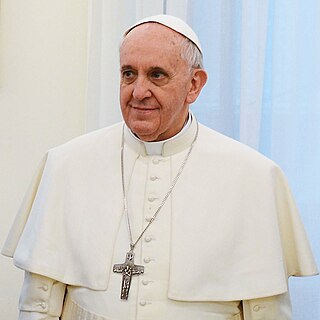
The 2013 papal conclave was convened to elect a pope to succeed Pope Benedict XVI following his resignation on 28 February 2013. After the 115 participating cardinal-electors gathered, they set 12 March 2013 as the beginning of the conclave. On the fifth ballot, the conclave elected Cardinal Jorge Mario Bergoglio, SJ, Archbishop of Buenos Aires. He took the pontifical name of Francis.

Pope Francis is the head of the Catholic Church. He has been sovereign of the Vatican City State since 13 March 2013. Francis is the first pope to be a member of the Society of Jesus, the first from the Americas, the first from the Southern Hemisphere, and the first pope from outside Europe since Gregory III, a Syrian who reigned in the 8th century.

The Society of Jesus abbreviated SJ, also known as the Jesuits, is a religious order of clerics regular of pontifical right for men in the Catholic Church headquartered in Rome. It was founded in 1540 by Ignatius of Loyola and six companions, with the approval of Pope Paul III. The society is engaged in evangelization and apostolic ministry in 112 nations. Jesuits work in education, research, and cultural pursuits. Jesuits also give retreats, minister in hospitals and parishes, sponsor direct social and humanitarian ministries, and promote ecumenical dialogue.
The 2013 papal conclave elects Pope Francis as the 266th Pope of the Catholic Church.

The 2013 papal conclave was convened to elect a pope to succeed Pope Benedict XVI following his resignation on 28 February 2013. After the 115 participating cardinal-electors gathered, they set 12 March 2013 as the beginning of the conclave. On the fifth ballot, the conclave elected Cardinal Jorge Mario Bergoglio, SJ, Archbishop of Buenos Aires. He took the pontifical name of Francis.

Pope Francis is the head of the Catholic Church. He has been sovereign of the Vatican City State since 13 March 2013. Francis is the first pope to be a member of the Society of Jesus, the first from the Americas, the first from the Southern Hemisphere, and the first pope from outside Europe since Gregory III, a Syrian who reigned in the 8th century.
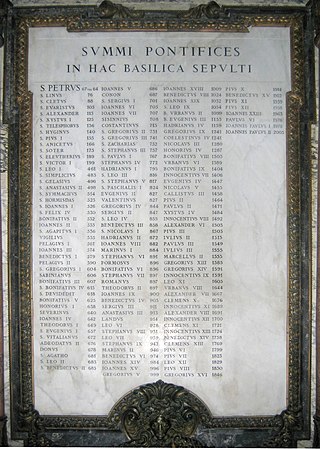
This chronological list of popes corresponds to that given in the Annuario Pontificio under the heading "I Sommi Pontefici Romani", excluding those that are explicitly indicated as antipopes. Published every year by the Roman Curia, the Annuario Pontificio no longer identifies popes by regnal number, stating that it is impossible to decide which pope represented the legitimate succession at various times. The 2001 edition of the Annuario Pontificio introduced "almost 200 corrections to its existing biographies of the popes, from St Peter to John Paul II". The corrections concerned dates, especially in the first two centuries, birthplaces and the family name of one pope.

The pope, also known as supreme pontiff, Roman pontiff or sovereign pontiff, is the bishop of Rome, head of the worldwide Catholic Church, and has also served as the head of state or sovereign of the Papal States and later the Vatican City State since the eighth century. From a Catholic viewpoint, the primacy of the bishop of Rome is largely derived from his role as the apostolic successor to Saint Peter, to whom primacy was conferred by Jesus, who gave Peter the Keys of Heaven and the powers of "binding and loosing", naming him as the "rock" upon which the Church would be built. The current pope is Francis, who was elected on 13 March 2013.

The Catholic Church, also known as the Roman Catholic Church, is the largest Christian church, with 1.3 billion baptized Catholics worldwide as of 2019. As the world's oldest and largest continuously functioning international institution, it has played a prominent role in the history and development of Western civilization. The church consists of 24 sui iuris churches, including the Latin Church and 23 Eastern Catholic Churches, which comprise almost 3,500 dioceses and eparchies located around the world. The pope, who is the bishop of Rome, is the chief pastor of the church. The bishopric of Rome, known as the Holy See, is the central governing authority of the church. The administrative body of the Holy See, the Roman Curia, has its principal offices in Vatican City, a small enclave of the Italian city of Rome, of which the pope is head of state.
The Sierre coach crash kills 28 people, including 22 children.

The Sierre coach crash occurred on 13 March 2012 near Sierre, Switzerland, when a coach carrying school teachers and pupils crashed into a wall in the Sierre Tunnel. Of the 52 people on board, 28 were killed in the crash, including both drivers, all four teachers, and 22 of the 46 children. The other 24 pupils, all aged between 10 and 12, were injured, including three who were hospitalised with severe brain and chest injuries.
An article in Nature identifies the Ciampate del Diavolo as 350,000-year-old hominid footprints.
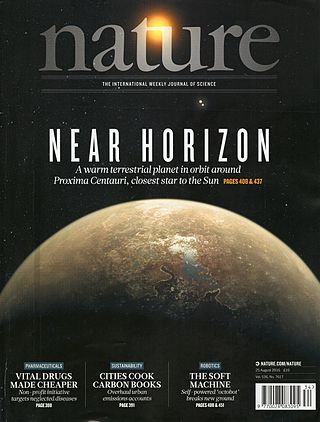
Nature is a British weekly scientific journal founded and based in London, England. As a multidisciplinary publication, Nature features peer-reviewed research from a variety of academic disciplines, mainly in science and technology. It has core editorial offices across the United States, continental Europe, and Asia under the international scientific publishing company Springer Nature. Nature was one of the world's most cited scientific journals by the Science Edition of the 2019 Journal Citation Reports, making it one of the world's most-read and most prestigious academic journals. As of 2012, it claimed an online readership of about three million unique readers per month.

The Ciampate del Diavolo is a locality near the extinct Roccamonfina volcano in northern Campania, Italy. It is named after fossilised footprints preserved in pyroclastic flow deposits that have been dated to around 350,000 years ago. They have been attributed to bipedal hominids, possibly Homo heidelbergensis, which is known to have inhabited the region at the time.
The Missionaries of Charity choose Sister Nirmala to succeed Mother Teresa as their leader.

The Missionaries of Charity is a Catholic religious congregation established in 1950 by Mother Teresa, now known in the Catholic Church as Saint Teresa of Calcutta. As of 2020, it consisted of 5,167 religious sisters. Members of the order designate their affiliation using the order's initials, "M.C.". A member of the congregation must adhere to the vows of chastity, poverty, obedience, and the fourth vow, to give "wholehearted free service to the poorest of the poor." Today, the order consists of both contemplative and active branches in several countries.
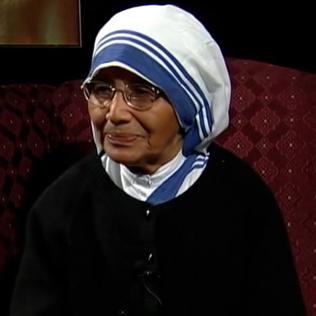
Maria Nirmala Joshi was an Indian Catholic Religious Sister who succeeded Nobel laureate Mother Teresa as the head of her Missionaries of Charity and expanded the movement overseas. After taking over the charity following Mother Teresa's death in 1997, Nirmala expanded the organisation's reach to 134 countries by opening centres in nations such as Afghanistan and Thailand.

Mary Teresa Bojaxhiu, MC, better known as Mother Teresa, was an Indian-Albanian Catholic nun who, in 1950, founded the Missionaries of Charity. Anjezë Gonxhe Bojaxhiu was born in Skopje—at the time, part of the Ottoman Empire. After eighteen years, she moved to Ireland and then to India, where she lived most of her life. Saint Teresa of Calcutta was canonised on 4 September 2016. The anniversary of her death is her feast day.
A gunman killed sixteen children and a teacher at a primary school in Dunblane, Scotland, before committing suicide.

The Dunblane massacre took place at Dunblane Primary School near Stirling, Scotland, United Kingdom, on 13 March 1996, when Thomas Hamilton shot dead 16 pupils and one teacher, and injured 15 others, before killing himself. It remains the deadliest mass shooting in British history.

Dunblane is a small town in the council area of Stirling in central Scotland, and inside the historic boundaries of the county of Perthshire. It is a commuter town, with many residents making use of good transport links to much of the Central Belt, including Glasgow and Edinburgh.
The Dunblane massacre leads to the death of sixteen primary school children and one teacher in Dunblane, Scotland.

The Dunblane massacre took place at Dunblane Primary School near Stirling, Scotland, United Kingdom, on 13 March 1996, when Thomas Hamilton shot dead 16 pupils and one teacher, and injured 15 others, before killing himself. It remains the deadliest mass shooting in British history.

Dunblane is a small town in the council area of Stirling in central Scotland, and inside the historic boundaries of the county of Perthshire. It is a commuter town, with many residents making use of good transport links to much of the Central Belt, including Glasgow and Edinburgh.
The 1993 Storm of the Century affects the eastern United States, dropping feet of snow in many areas.

The 1993 Storm of the Century was a cyclonic storm that formed over the Gulf of Mexico on March 12, 1993. The cold weather, heavy snowfall, high winds and storm surges that the storm brought affected a very large area; at its height, it stretched from Canada to Honduras. The cyclone moved through the Gulf of Mexico and then through the eastern United States before moving on to eastern Canada. It eventually dissipated in the North Atlantic Ocean on March 15.

The Eastern United States, commonly referred to as the American East, Eastern America, or simply the East, is the region of the United States to the east of the Mississippi River. In some cases the term may refer to a smaller area or the East Coast plus Illinois, Wisconsin, Indiana, Mississippi and their border states.
The Mw 6.6 Erzincan earthquake strikes eastern Turkey with a maximum Mercalli intensity of VIII (Severe).
On 13 March, the 1992 Erzincan earthquake struck eastern Turkey with a moment magnitude of 6.7 and a maximum Mercalli intensity of VIII (Severe). Originating on the North Anatolian Fault, it rocked the country, leaving at least 498 people dead, roughly 2,000 injured, and an unknown amount missing. Total financial losses were between $13.5 million and $750 million.

Turkey, officially the Republic of Türkiye, is a transcontinental country located mainly on the Anatolian Peninsula in Western Asia, with a small portion on the Balkan Peninsula in Southeast Europe. It shares borders with the Black Sea to the north; Georgia to the northeast; Armenia, Azerbaijan, and Iran to the east; Iraq to the southeast; Syria and the Mediterranean Sea to the south; the Aegean Sea to the west; and Greece and Bulgaria to the northwest. Cyprus is located off the south coast. Turks form the vast majority of the nation's population and Kurds are the largest minority. Ankara is Turkey's capital, while Istanbul is its largest city and financial centre.
The Modified Mercalli intensity scale, developed from Giuseppe Mercalli's Mercalli intensity scale of 1902, is a seismic intensity scale used for measuring the intensity of shaking produced by an earthquake. It measures the effects of an earthquake at a given location, distinguished from the earthquake's inherent force or strength as measured by seismic magnitude scales. While shaking is caused by the seismic energy released by an earthquake, earthquakes differ in how much of their energy is radiated as seismic waves. Deeper earthquakes also have less interaction with the surface, and their energy is spread out across a larger volume. Shaking intensity is localized, generally diminishing with distance from the earthquake's epicenter, but can be amplified in sedimentary basins and certain kinds of unconsolidated soils.
The Seikan Tunnel, the longest and deepest tunnel in the world at the time, opened between the cities of Hakodate and Aomori, Japan.
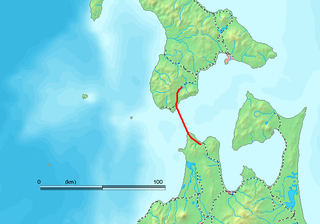
The Seikan Tunnel, is a 53.85 km (33.46 mi) dual-gauge railway tunnel in Japan, with a 23.3 km (14.5 mi) portion under the seabed of the Tsugaru Strait, which separates Aomori Prefecture on the main Japanese island of Honshu from the northern island of Hokkaido. The track level is about 100 m (330 ft) below the seabed and 240 m (790 ft) below sea level. The tunnel is part of the standard-gauge Hokkaido Shinkansen and the narrow-gauge Kaikyō Line of the Hokkaido Railway Company 's Tsugaru-Kaikyō Line. The name Seikan comes from combining the on'yomi readings of the first characters of Aomori (青森), the nearest major city on the Honshu side of the strait, and Hakodate (函館), the nearest major city on the Hokkaido side.

Hakodate is a city and port located in Oshima Subprefecture, Hokkaido, Japan. It is the capital city of Oshima Subprefecture. As of July 31, 2011, the city has an estimated population of 279,851 with 143,221 households, and a population density of 412.83 persons per km2. The total area is 677.77 square kilometres (261.69 sq mi). The city is the third biggest in Hokkaido after Sapporo and Asahikawa.
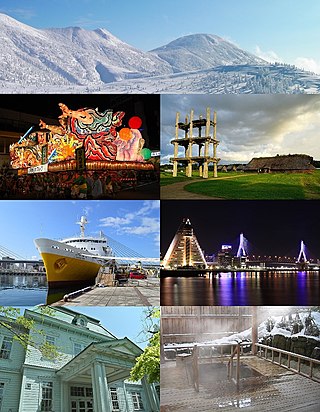
Aomori is the capital city of Aomori Prefecture, in the Tōhoku region of Japan. As of 1 April 2020, the city had an estimated population of 278,964 in 136,457 households, and a population density of 340 people per square kilometer spread over the city's total area of 824.61 square kilometers (318.38 sq mi). Aomori is one of Japan's 60 core cities and the core of the Aomori metropolitan area.
The Seikan Tunnel, the longest tunnel in the world with an undersea segment, opens between Aomori and Hakodate, Japan.

The Seikan Tunnel, is a 53.85 km (33.46 mi) dual-gauge railway tunnel in Japan, with a 23.3 km (14.5 mi) portion under the seabed of the Tsugaru Strait, which separates Aomori Prefecture on the main Japanese island of Honshu from the northern island of Hokkaido. The track level is about 100 m (330 ft) below the seabed and 240 m (790 ft) below sea level. The tunnel is part of the standard-gauge Hokkaido Shinkansen and the narrow-gauge Kaikyō Line of the Hokkaido Railway Company 's Tsugaru-Kaikyō Line. The name Seikan comes from combining the on'yomi readings of the first characters of Aomori (青森), the nearest major city on the Honshu side of the strait, and Hakodate (函館), the nearest major city on the Hokkaido side.

Aomori is the capital city of Aomori Prefecture, in the Tōhoku region of Japan. As of 1 April 2020, the city had an estimated population of 278,964 in 136,457 households, and a population density of 340 people per square kilometer spread over the city's total area of 824.61 square kilometers (318.38 sq mi). Aomori is one of Japan's 60 core cities and the core of the Aomori metropolitan area.

Hakodate is a city and port located in Oshima Subprefecture, Hokkaido, Japan. It is the capital city of Oshima Subprefecture. As of July 31, 2011, the city has an estimated population of 279,851 with 143,221 households, and a population density of 412.83 persons per km2. The total area is 677.77 square kilometres (261.69 sq mi). The city is the third biggest in Hokkaido after Sapporo and Asahikawa.
Claiming the right of innocent passage, the American warships Yorktown and Caron entered Soviet territorial waters in the Black Sea.
Innocent passage is a concept in the law of the sea that allows for a vessel to pass through the archipelagic and territorial waters of another state, subject to certain restrictions. The United Nations Convention on the Law of the Sea Article 19 defines innocent passage as: Passage is innocent so long as it is not prejudicial to the peace, good order or security of the coastal State. Such passage shall take place in conformity with this Convention and with other rules of international law. Passage of a foreign ship shall be considered to be prejudicial to the peace, good order or security of the coastal State if in the territorial sea it engages in any of the following activities: (a) any threat or use of force against the sovereignty, territorial integrity or political independence of the coastal State, or in any other manner in violation of the principles of international law embodied in the Charter of the United Nations; (b) any exercise or practice with weapons of any kind; (c) any act aimed at collecting information to the prejudice of the defence or security of the coastal State; (d) any act of propaganda aimed at affecting the defence or security of the coastal State; (e) the launching, landing or taking on board of any aircraft; (f) the launching, landing or taking on board of any military device; (g) the loading or unloading of any commodity, currency or person contrary to the customs, fiscal, immigration or sanitary laws and regulations of the coastal State; (h) any act of wilful and serious pollution contrary to this Convention; (I) any fishing activities; (j) the carrying out of research or survey activities; (k) any act aimed at interfering with any systems of communication or any other facilities or installations of the coastal State; (l) any other activity not having a direct bearing on passage.

USS Yorktown (DDG-48/CG-48) was a Ticonderoga-class cruiser in the United States Navy from 1984 to 2004, named for the American Revolutionary War Battle of Yorktown.
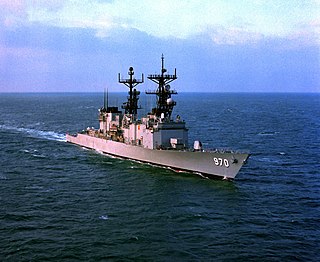
USS Caron (DD-970) was a Spruance-class destroyer, named for Hospital Corpsman Third Class Wayne M. Caron (1946–1968), who was killed in action during the Vietnam War, and posthumously awarded the Medal of Honor.
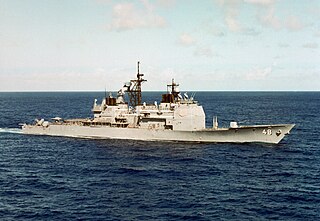
On March 13, 1986, the American cruiser USS Yorktown and the destroyer USS Caron, claiming the right of innocent passage, entered Soviet territorial waters in the Black Sea near the southern Crimean Peninsula. The warships passed within six miles of the Soviet coast, where they were soon confronted by the Soviet frigate Ladny. The commander of Ladny notified the U.S. warships that they had violated Soviet territorial waters and requested that they depart immediately. The U.S. warships confirmed receipt of the warning but did not change course. The Soviet command placed its Black Sea air and naval forces on combat readiness and dispatched border guard vessels and naval aircraft to intercept the U.S. warships.

The Black Sea is a marginal mediterranean sea of the Atlantic Ocean lying between Europe and Asia, east of the Balkans, south of the East European Plain, west of the Caucasus, and north of Anatolia. It is bounded by Bulgaria, Georgia, Romania, Russia, Turkey, and Ukraine. The Black Sea is supplied by major rivers, principally the Danube, Dnieper, and Don. Consequently, while six countries have a coastline on the sea, its drainage basin includes parts of 24 countries in Europe.
One of England's worst incidents of football hooliganism occurred when supporters of Luton Town and Millwall rioted before a match at Kenilworth Road stadium.

Football hooliganism, also known as soccer hooliganism, football rioting or soccer rioting, constitutes violence and other destructive behaviours perpetrated by spectators at association football events. Football hooliganism normally involves conflict between gangs, in English known as football firms, formed to intimidate and attack supporters of other teams. Other English-language terms commonly used in connection with hooligan firms include "army", "boys", "bods", "casuals", and "crew". Certain clubs have long-standing rivalries with other clubs and hooliganism associated with matches between them is likely to be more severe.

Luton Town Football Club is a professional association football club based in the town of Luton, Bedfordshire, England, that competes in the Championship, the second tier of the English football league system. Founded in 1885, it is nicknamed 'the Hatters' and affiliated to the Bedfordshire County Football Association. The team plays its home matches at Kenilworth Road, where it has been based since 1905. The club's history includes one major trophy win, several financial crises, numerous promotions and relegations, and some spells of sustained success. It was perhaps most prominent between 1982 and 1992, when it was a member of English football's top division, at that time the First Division; the team won its first major honour, the Football League Cup, in 1988. Luton Town have a long-standing rivalry with nearby club Watford.

Millwall Football Club is a professional football club in Bermondsey, South East London, England. They compete in the EFL Championship, the second tier of English football. Founded as Millwall Rovers in 1885, the club has retained its name despite having last played in the Millwall area of the Isle of Dogs in 1910. From then until 1993, the club played at what is now called The Old Den in New Cross, before moving to its current home stadium nearby, called The Den. The traditional club crest is a lion rampant, referred to in the team's nickname 'The Lions'. Millwall's traditional kit consists of dark blue shirts, white shorts, and blue socks.

The 1985 Luton riot occurred before, during and after a 1984–85 FA Cup sixth-round football match between Luton Town and Millwall on 13 March 1985 at Luton Town's Kenilworth Road ground in Luton, Bedfordshire, England, United Kingdom. It was one of the worst incidents of football hooliganism during the 1980s, and led to a ban on away supporters by Luton Town which lasted for four seasons. This itself led to Luton's expulsion from the Football League Cup during the 1986–87 season. The club also began to enforce a membership card scheme, which Margaret Thatcher's government attempted to have adopted at grounds across England. Kenilworth Road was damaged, along with the surrounding area, and a year later was converted to an all-seater stadium.

Kenilworth Road is an association football stadium in Luton, Bedfordshire, England. It has been the home ground of Luton Town Football Club since 1905. The stadium has also hosted women's and youth international matches, including the second leg of the 1984 European Competition for Women's Football final.
The New Jewel Movement, headed by Maurice Bishop, ousts the Prime Minister of Grenada, Eric Gairy, in a coup d'état.
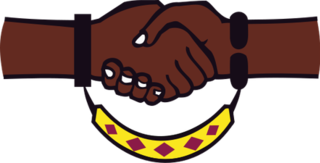
The New Joint Endeavor for Welfare, Education, and Liberation, or New JEWEL Movement (NJM), was a Marxist–Leninist communist party in the Caribbean island nation of Grenada that was led by Maurice Bishop.

Maurice Rupert Bishop was a Grenadian revolutionary and the leader of New Jewel Movement – a Marxist–Leninist party which sought to prioritise socio-economic development, education, and black liberation – that came to power during the 13 March 1979 revolution that removed Eric Gairy from office. Bishop headed the People's Revolutionary Government of Grenada from 1979 to 1983, when he was dismissed from his post and executed during the coup by Bernard Coard, leading to upheaval.

This is a list of heads of government of Grenada, from the establishment of the office of Chief Minister in 1960 to the present day.

Sir Eric Matthew Gairy PC was the first Prime Minister of Grenada, serving from his country's independence in 1974 until his overthrow in a coup by Maurice Bishop in 1979. Gairy also served as head of government in pre-independence Grenada as Chief Minister from 1961 to 1962, and as Premier from 1967 to 1974.
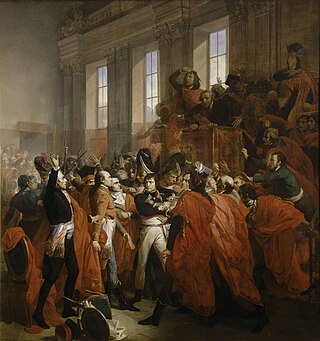
A coup d'état, also known as a coup or overthrow, is a seizure and removal of a government and its powers. Typically, it is an illegal seizure of power by a political faction, politician, cult, rebel group, military, or a dictator. Many scholars consider a coup successful when the usurpers seize and hold power for at least seven days.
Apollo 9 returns safely to Earth after testing the Lunar Module.

Apollo 9 was the third human spaceflight in NASA's Apollo program. Flown in low Earth orbit, it was the second crewed Apollo mission that the United States launched via a Saturn V rocket, and was the first flight of the full Apollo spacecraft: the command and service module (CSM) with the Lunar Module (LM). The mission was flown to qualify the LM for lunar orbit operations in preparation for the first Moon landing by demonstrating its descent and ascent propulsion systems, showing that its crew could fly it independently, then rendezvous and dock with the CSM again, as would be required for the first crewed lunar landing. Other objectives of the flight included firing the LM descent engine to propel the spacecraft stack as a backup mode, and use of the portable life support system backpack outside the LM cabin.

Earth is the third planet from the Sun and the only astronomical object known to harbor life. While large volumes of water can be found throughout the Solar System, only Earth sustains liquid surface water. About 71% of Earth's surface is made up of the ocean, dwarfing Earth's polar ice, lakes, and rivers. The remaining 29% of Earth's surface is land, consisting of continents and islands. Earth's surface layer is formed of several slowly moving tectonic plates, interacting to produce mountain ranges, volcanoes, and earthquakes. Earth's liquid outer core generates the magnetic field that shapes the magnetosphere of the Earth, deflecting destructive solar winds.

The Apollo Lunar Module, originally designated the Lunar Excursion Module (LEM), was the lunar lander spacecraft that was flown between lunar orbit and the Moon's surface during the United States' Apollo program. It was the first crewed spacecraft to operate exclusively in the airless vacuum of space, and remains the only crewed vehicle to land anywhere beyond Earth.
Kitty Genovese was murdered in New York City, prompting research into the bystander effect due to the false story that neighbors witnessed the killing and did nothing to help her.

In the early hours of March 13, 1964, Kitty Genovese, a 28-year-old bartender, was raped and stabbed outside the apartment building where she lived in the Kew Gardens neighborhood of Queens in New York City, New York, United States. Two weeks after the murder, The New York Times published an article erroneously claiming that 38 witnesses saw or heard the attack, and that none of them called the police or came to her aid.
The bystander effect, or bystander apathy, is a social psychological theory that states that individuals are less likely to offer help to a victim when there are other people present. First proposed in 1964, much research, mostly in the lab, has focused on increasingly varied factors, such as the number of bystanders, ambiguity, group cohesiveness, and diffusion of responsibility that reinforces mutual denial. If a single individual is asked to complete the task alone, the sense of responsibility will be strong, and there will be a positive response; however, if a group is required to complete the task together, each individual in the group will have a weak sense of responsibility, and will often shrink back in the face of difficulties or responsibilities. The theory was prompted by the murder of Kitty Genovese about which it was wrongly reported that 38 bystanders watched passively. Recent research has focused on "real world" events captured on security cameras, and the coherency and robustness of the effect has come under question. More recent studies also show that this effect can generalize to workplace settings, where subordinates often refrain from informing managers regarding ideas, concerns, and opinions.
Lyman Lemnitzer, the Chairman of the U.S. Joint Chiefs of Staff, presented to the Secretary of Defense a false flag conspiracy plan, Operation Northwoods, intended to create public support for a war against Fidel Castro and Cuba.

Lyman Louis Lemnitzer was a United States Army general who served as the fourth chairman of the Joint Chiefs of Staff from 1960 to 1962. He then served as the Supreme Allied Commander Europe of NATO from 1963 to 1969.

The Joint Chiefs of Staff (JCS) is the body of the most senior uniformed leaders within the United States Department of Defense, that advises the president of the United States, the secretary of defense, the Homeland Security Council and the National Security Council on military matters. The composition of the Joint Chiefs of Staff is defined by statute and consists of a chairman (CJCS), a vice chairman (VJCS), the service chiefs of the Army, Marine Corps, Navy, Air Force, Space Force, and the chief of the National Guard Bureau. Each of the individual service chiefs, outside their JCS obligations, work directly under the secretaries of their respective military departments, e.g. the secretary of the Army, the secretary of the Navy, and the secretary of the Air Force.

The United States secretary of defense (SecDef) is the head of the United States Department of Defense, the executive department of the U.S. Armed Forces, and is a high ranking member of the federal cabinet. The secretary of defense's position of command and authority over the military is second only to that of the president of the United States, who is the commander-in-chief. This position corresponds to what is generally known as a defense minister in many other countries. The secretary of defense is appointed by the president with the advice and consent of the Senate, and is by custom a member of the Cabinet and by law a member of the National Security Council.
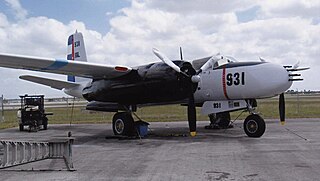
A false flag operation is an act committed with the intent of disguising the actual source of responsibility and pinning blame on another party. The term "false flag" originated in the 16th century as an expression meaning an intentional misrepresentation of someone's allegiance. The term was famously used to describe a ruse in naval warfare whereby a vessel flew the flag of a neutral or enemy country in order to hide its true identity. The tactic was originally used by pirates and privateers to deceive other ships into allowing them to move closer before attacking them. It later was deemed an acceptable practice during naval warfare according to international maritime laws, provided the attacking vessel displayed its true flag once an attack had begun.

Operation Northwoods was a proposed false flag operation against American citizens that originated within the US Department of Defense of the United States government in 1962. The proposals called for CIA operatives to both stage and actually commit acts of violent terrorism against American military and civilian targets, blaming them on the Cuban government, and using it to justify a war against Cuba. The possibilities detailed in the document included the remote control of civilian aircraft which would be secretly repainted as US Air Force planes, the possible assassination of Cuban immigrants, sinking boats of Cuban refugees on the high seas, blowing up a U.S. ship, and orchestrating terrorism in U.S. cities. The attacks on Americans were not supposed to be violent, while the attacks on Cuban refugee boats were supposed to be "real or simulated", with the maximum extent of wounding them for media publicity. The proposals were rejected by President John F. Kennedy.
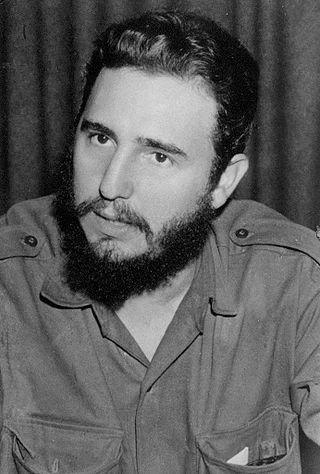
Fidel Alejandro Castro Ruz was a Cuban revolutionary and politician who was the leader of Cuba from 1959 to 2008, serving as the prime minister of Cuba from 1959 to 1976 and president from 1976 to 2008. Ideologically a Marxist–Leninist and Cuban nationalist, he also served as the first secretary of the Communist Party of Cuba from 1961 until 2011. Under his administration, Cuba became a one-party communist state; industry and business were nationalized, and state socialist reforms were implemented throughout society.
Cuban student revolutionaries storm the presidential palace in Havana in a failed attempt on the life of President Fulgencio Batista.

Cuba, officially the Republic of Cuba, is an island country comprising the island of Cuba, as well as Isla de la Juventud and several minor archipelagos. Cuba is located where the northern Caribbean Sea, Gulf of Mexico, and Atlantic Ocean meet. Cuba is located east of the Yucatán Peninsula (Mexico), south of both the American state of Florida and the Bahamas, west of Hispaniola, and north of both Jamaica and the Cayman Islands. Havana is the largest city and capital; other major cities include Santiago de Cuba and Camagüey. The official area of the Republic of Cuba is 109,884 km2 (42,426 sq mi) but a total of 350,730 km² including the exclusive economic zone. Cuba is the second-most populous country in the Caribbean after Haiti, with over 11 million inhabitants.

The Museum of the Revolution is located in the Old Havana section of Havana, Cuba, in what was the Presidential Palace of all Cuban presidents from Mario García Menocal to Fulgencio Batista. The building became the Museum of the Revolution during the years following the Cuban Revolution. The palace building was attacked by the Directorio Revolucionario Estudiantil in 1957.

Havana is the capital and largest city of Cuba. The heart of the La Habana Province, Havana is the country's main port and commercial center. The city has a population of 2.3 million inhabitants, and it spans a total of 728.26 km2 (281.18 sq mi) – making it the largest city by area, the most populous city, and the fourth largest metropolitan area in the Caribbean region.

Fulgencio Batista y Zaldívar was a Cuban military officer and politician who served as the elected president of Cuba from 1940 to 1944 and as its U.S.-backed military dictator from 1952 to 1959, when he was overthrown by the Cuban Revolution.
Việt Minh forces under General Võ Nguyên Giáp began a massive artillery bombardment on the French military, beginning the Battle of Dien Bien Phu, the climactic battle of the First Indochina War.

The Việt Minh was a national independence coalition formed at Pác Bó by Hồ Chí Minh on 19 May 1941. Also known as the Việt Minh Front, it was created by the Indochinese Communist Party as a national united front to achieve the independence of the Democratic Republic of Vietnam.

Võ Nguyên Giáp was a Vietnamese general and communist politician who is regarded as having been one of the greatest military strategists of the 20th century. He served as interior minister in President Hồ Chí Minh's Việt Minh government, the military commander of the Việt Minh, the commander of the People's Army of Vietnam (PAVN), minister of defence, and deputy prime minister. He also served as a member of the Politburo of the Vietnam Workers' Party, which in 1976 became the Communist Party of Vietnam.

Artillery is a class of heavy military ranged weapons that launch munitions far beyond the range and power of infantry firearms. Early artillery development focused on the ability to breach defensive walls and fortifications during sieges, and led to heavy, fairly immobile siege engines. As technology improved, lighter, more mobile field artillery cannons developed for battlefield use. This development continues today; modern self-propelled artillery vehicles are highly mobile weapons of great versatility generally providing the largest share of an army's total firepower.

The Battle of Dien Bien Phu was a climactic confrontation of the First Indochina War that took place between 13 March and 7 May 1954. It was fought between the French Union's colonial Far East Expeditionary Corps and Viet Minh communist revolutionaries. The United States was officially not a party to the war, but it was secretly involved by providing financial and material aid to the French Union, which included CIA contracted American personnel participating in the battle. The People's Republic of China and the Soviet Union similarly provided vital support to the Viet Minh, including most of their artillery and ammunition.

The First Indochina War began in French Indochina from 19 December 1946 to 20 July 1954 between France and Việt Minh, and their respective allies. Việt Minh was led by Võ Nguyên Giáp and Hồ Chí Minh. Most of the fighting took place in Tonkin in Northern Vietnam, although the conflict engulfed the entire country and also extended into the neighboring French Indochina protectorates of Laos and Cambodia.
The Battle of Điện Biên Phủ begins with an artillery barrage by Viet Minh forces under Võ Nguyên Giáp; Viet Minh victory led to the end of the First Indochina War and French withdrawal from Vietnam.

The Battle of Dien Bien Phu was a climactic confrontation of the First Indochina War that took place between 13 March and 7 May 1954. It was fought between the French Union's colonial Far East Expeditionary Corps and Viet Minh communist revolutionaries. The United States was officially not a party to the war, but it was secretly involved by providing financial and material aid to the French Union, which included CIA contracted American personnel participating in the battle. The People's Republic of China and the Soviet Union similarly provided vital support to the Viet Minh, including most of their artillery and ammunition.

The Việt Minh was a national independence coalition formed at Pác Bó by Hồ Chí Minh on 19 May 1941. Also known as the Việt Minh Front, it was created by the Indochinese Communist Party as a national united front to achieve the independence of the Democratic Republic of Vietnam.

Võ Nguyên Giáp was a Vietnamese general and communist politician who is regarded as having been one of the greatest military strategists of the 20th century. He served as interior minister in President Hồ Chí Minh's Việt Minh government, the military commander of the Việt Minh, the commander of the People's Army of Vietnam (PAVN), minister of defence, and deputy prime minister. He also served as a member of the Politburo of the Vietnam Workers' Party, which in 1976 became the Communist Party of Vietnam.

The First Indochina War began in French Indochina from 19 December 1946 to 20 July 1954 between France and Việt Minh, and their respective allies. Việt Minh was led by Võ Nguyên Giáp and Hồ Chí Minh. Most of the fighting took place in Tonkin in Northern Vietnam, although the conflict engulfed the entire country and also extended into the neighboring French Indochina protectorates of Laos and Cambodia.
The Holocaust: Nazi troops began the final liquidation of the Kraków Ghetto in Poland, sending about 2,000 Jews to the Płaszów labor camp, with the remaining 5,000 either killed or sent to Auschwitz.

The Holocaust, also known as the Shoah, was the genocide of European Jews during World War II. Between 1941 and 1945, Nazi Germany and its collaborators systematically murdered some six million Jews across German-occupied Europe; around two-thirds of Europe's Jewish population. The murders were carried out in pogroms and mass shootings; by a policy of extermination through labor in concentration camps; and in gas chambers and gas vans in German extermination camps, chiefly Auschwitz-Birkenau, Bełżec, Chełmno, Majdanek, Sobibór, and Treblinka in occupied Poland.

The Kraków Ghetto was one of five major metropolitan Nazi ghettos created by Germany in the new General Government territory during the German occupation of Poland in World War II. It was established for the purpose of exploitation, terror, and persecution of local Polish Jews. The ghetto was later used as a staging area for separating the "able workers" from those to be deported to extermination camps in Operation Reinhard. The Ghetto was liquidated between June 1942 and March 1943, with most of its inhabitants deported to the Belzec extermination camp as well as to Płaszów slave-labor camp, and Auschwitz concentration camp, 60 kilometres (37 mi) rail distance.
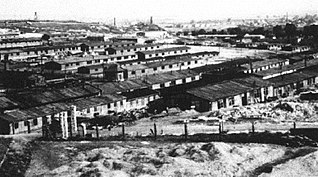
Płaszów or Kraków-Płaszów was a Nazi concentration camp operated by the SS in Płaszów, a southern suburb of Kraków, in the General Governorate of German-occupied Poland. Most of the prisoners were Polish Jews who were targeted for destruction by Nazi Germany during the Holocaust. Many prisoners died because of executions, forced labor, and the poor conditions in the camp. The camp was evacuated in January 1945, before the Red Army's liberation of the area on 20 January.

Auschwitz concentration camp was a complex of over 40 concentration and extermination camps operated by Nazi Germany in occupied Poland during World War II and the Holocaust. It consisted of Auschwitz I, the main camp (Stammlager) in Oświęcim; Auschwitz II-Birkenau, a concentration and extermination camp with gas chambers; Auschwitz III-Monowitz, a labor camp for the chemical conglomerate IG Farben; and dozens of subcamps. The camps became a major site of the Nazis' final solution to the Jewish question.
The Holocaust: German forces liquidate the Jewish ghetto in Kraków.

The Holocaust, also known as the Shoah, was the genocide of European Jews during World War II. Between 1941 and 1945, Nazi Germany and its collaborators systematically murdered some six million Jews across German-occupied Europe; around two-thirds of Europe's Jewish population. The murders were carried out in pogroms and mass shootings; by a policy of extermination through labor in concentration camps; and in gas chambers and gas vans in German extermination camps, chiefly Auschwitz-Birkenau, Bełżec, Chełmno, Majdanek, Sobibór, and Treblinka in occupied Poland.

Nazi Germany was the German state between 1933 and 1945, when Adolf Hitler and the Nazi Party controlled the country, transforming it into a dictatorship. Under Hitler's rule, Germany quickly became a totalitarian state where nearly all aspects of life were controlled by the government. The Third Reich, meaning "Third Realm" or "Third Empire", alluded to the Nazi claim that Nazi Germany was the successor to the earlier Holy Roman Empire (800–1806) and German Empire (1871–1918). The Third Reich, which Hitler and the Nazis referred to as the Thousand-Year Reich, ended in May 1945 after just 12 years when the Allies defeated Germany, ending World War II in Europe.

The Kraków Ghetto was one of five major metropolitan Nazi ghettos created by Germany in the new General Government territory during the German occupation of Poland in World War II. It was established for the purpose of exploitation, terror, and persecution of local Polish Jews. The ghetto was later used as a staging area for separating the "able workers" from those to be deported to extermination camps in Operation Reinhard. The Ghetto was liquidated between June 1942 and March 1943, with most of its inhabitants deported to the Belzec extermination camp as well as to Płaszów slave-labor camp, and Auschwitz concentration camp, 60 kilometres (37 mi) rail distance.
The Winter War between Finland and the Soviet Union officially ends after the signing of the Moscow Peace Treaty.

The Winter War, also known as the First Soviet-Finnish War, was a war between the Soviet Union and Finland. The war began with a Soviet invasion of Finland on 30 November 1939, three months after the outbreak of World War II, and ended three and a half months later with the Moscow Peace Treaty on 13 March 1940. Despite superior military strength, especially in tanks and aircraft, the Soviet Union suffered severe losses and initially made little headway. The League of Nations deemed the attack illegal and expelled the Soviet Union from the organisation.

Finland, officially the Republic of Finland, is a Nordic country in Northern Europe. It shares land borders with Sweden to the northwest, Norway to the north, and Russia to the east, with the Gulf of Bothnia to the west and the Gulf of Finland across Estonia to the south. Finland covers an area of 338,455 square kilometres (130,678 sq mi) with a population of 5.6 million. Helsinki is the capital and largest city, forming a larger metropolitan area with the neighbouring cities of Espoo, Kauniainen, and Vantaa. The vast majority of the population are ethnic Finns. Finnish, alongside Swedish, are the official languages. Swedish is the native language of 5.2% of the population. Finland's climate varies from humid continental in the south to the boreal in the north. The land cover is primarily a boreal forest biome, with more than 180,000 recorded lakes.

The Soviet Union, officially the Union of Soviet Socialist Republics (USSR), was a transcontinental country that spanned much of Eurasia from 1922 to 1991. A flagship communist state, it was nominally a federal union of fifteen national republics; in practice, both its government and its economy were highly centralized until its final years. It was a one-party state governed by the Communist Party of the Soviet Union, with the city of Moscow serving as its capital as well as that of its largest and most populous republic: the Russian SFSR. Other major cities included Leningrad, Kiev, Minsk, Tashkent, Alma-Ata, and Novosibirsk. It was the largest country in the world, covering over 22,402,200 square kilometres (8,649,500 sq mi) and spanning eleven time zones.

The Moscow Peace Treaty was signed by Finland and the Soviet Union on 12 March 1940, and the ratifications were exchanged on 21 March. It marked the end of the 105-day Winter War, upon which Finland ceded border areas to the Soviet Union. The treaty was signed by Vyacheslav Molotov, Andrei Zhdanov and Aleksandr Vasilevsky for the Soviet Union, and Risto Ryti, Juho Kusti Paasikivi, Rudolf Walden and Väinö Voionmaa for Finland. The terms of the treaty were not reversed after the dissolution of the Soviet Union. The Karelian question refers to the debate within Finland over the possible reacquisition of this ceded territory.
The news of the discovery of Pluto is announced by Lowell Observatory.

Pluto is a dwarf planet in the Kuiper belt, a ring of bodies beyond the orbit of Neptune. It is the ninth-largest and tenth-most-massive known object to directly orbit the Sun. It is the largest known trans-Neptunian object by volume, by a small margin, but is slightly less massive than Eris. Like other Kuiper belt objects, Pluto is made primarily of ice and rock and is much smaller than the inner planets. Compared to Earth's moon, Pluto has only one sixth its mass and one third its volume.

Lowell Observatory is an astronomical observatory in Flagstaff, Arizona, United States. Lowell Observatory was established in 1894, placing it among the oldest observatories in the United States, and was designated a National Historic Landmark in 1965. In 2011, the Observatory was named one of "The World's 100 Most Important Places" by Time Magazine. It was at the Lowell Observatory that the dwarf planet Pluto was discovered in 1930 by Clyde Tombaugh.
The Kapp Putsch (participants pictured), an attempted coup aiming to undo the German Revolution of 1918–1919, briefly ousted the government of the Weimar Republic.

The Kapp Putsch, also known as the Kapp–Lüttwitz Putsch, was an attempted coup against the German national government in Berlin on 13 March 1920. Named after its leaders Wolfgang Kapp and Walther von Lüttwitz, its goal was to undo the German Revolution of 1918–1919, overthrow the Weimar Republic, and establish an autocratic government in its place. It was supported by parts of the Reichswehr, as well as nationalist and monarchist factions.

A coup d'état, also known as a coup or overthrow, is a seizure and removal of a government and its powers. Typically, it is an illegal seizure of power by a political faction, politician, cult, rebel group, military, or a dictator. Many scholars consider a coup successful when the usurpers seize and hold power for at least seven days.

The German Revolution or November Revolution was a civil conflict in the German Empire at the end of the First World War that resulted in the replacement of the German federal constitutional monarchy with a democratic parliamentary republic that later became known as the Weimar Republic. The revolutionary period lasted from November 1918 until the adoption of the Weimar Constitution in August 1919. Among the factors leading to the revolution were the extreme burdens suffered by the German population during the four years of war, the economic and psychological impacts of the German Empire's defeat by the Allies, and growing social tensions between the general population and the aristocratic and bourgeois elite.

The Weimar Republic, officially named the German Reich, was the government of Germany from 1918 to 1933, during which it was a constitutional federal republic for the first time in history; hence it is also referred to, and unofficially proclaimed itself, as the German Republic. The state's informal name is derived from the city of Weimar, which hosted the constituent assembly that established its government. In English, the state was usually simply called "Germany", with "Weimar Republic" not commonly used until the 1930s.
The Kapp Putsch briefly ousts the Weimar Republic government from Berlin.

The Kapp Putsch, also known as the Kapp–Lüttwitz Putsch, was an attempted coup against the German national government in Berlin on 13 March 1920. Named after its leaders Wolfgang Kapp and Walther von Lüttwitz, its goal was to undo the German Revolution of 1918–1919, overthrow the Weimar Republic, and establish an autocratic government in its place. It was supported by parts of the Reichswehr, as well as nationalist and monarchist factions.

The Weimar Republic, officially named the German Reich, was the government of Germany from 1918 to 1933, during which it was a constitutional federal republic for the first time in history; hence it is also referred to, and unofficially proclaimed itself, as the German Republic. The state's informal name is derived from the city of Weimar, which hosted the constituent assembly that established its government. In English, the state was usually simply called "Germany", with "Weimar Republic" not commonly used until the 1930s.
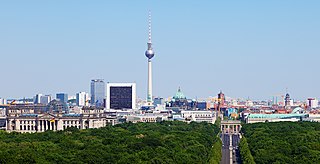
Berlin is the capital and largest city of Germany by both area and population. Its 3.6 million inhabitants make it the European Union's most populous city, according to population within city limits. One of Germany's sixteen constituent states, Berlin is surrounded by the State of Brandenburg and contiguous with Potsdam, Brandenburg's capital. Berlin's urban area, which has a population of around 4.5 million, is the second most populous urban area in Germany after the Ruhr. The Berlin-Brandenburg capital region has around 6.2 million inhabitants and is Germany's third-largest metropolitan region after the Rhine-Ruhr and Rhine-Main regions.
British forces occupy Bloemfontein, Orange Free State, during the Second Boer War.

Bloemfontein, also known as Bloem, is one of South Africa's three capital cities and the capital of the Free State province. It serves as the country's judicial capital, along with legislative capital Cape Town and administrative capital Pretoria. Bloemfontein is the seventh-largest city in South Africa.

The Orange Free State was an independent Boer sovereign republic under British suzerainty in Southern Africa during the second half of the 19th century, which ceased to exist after it was defeated and surrendered to the British Empire at the end of the Second Boer War in 1902. It is one of the three historical precursors to the present-day Free State province.

The Second Boer War, also known as the Boer War, the Anglo–Boer War, or the South African War, was a conflict fought between the British Empire and the two Boer Republics over the Empire's influence in Southern Africa from 1899 to 1902. Following the discovery of gold deposits in the Boer republics, there was a large influx of "foreigners", mostly British from the Cape Colony. They were not permitted to have a vote, and were regarded as "unwelcome visitors", invaders, and they protested to the British authorities in the Cape. Negotiations failed and, in the opening stages of the war, the Boers launched successful attacks against British outposts before being pushed back by imperial reinforcements. Though the British swiftly occupied the Boer republics, numerous Boers refused to accept defeat and engaged in guerrilla warfare. Eventually, British scorched earth policies, and the poor conditions suffered in concentration camps by Boer women and children who had been displaced by these policies, brought the remaining Boer guerillas to the negotiating table, ending the war.
The Siege of Khartoum begins. It lasts until January 26, 1885.

The Siege of Khartoum occurred from 13 March 1884 to 26 January 1885. Sudanese Mahdist forces captured the city of Khartoum from its Egyptian garrison, thereby gaining control over the whole of Sudan.
The Act Prohibiting the Return of Slaves is passed by the United States Congress, effectively annulling the Fugitive Slave Act of 1850 and setting the stage for the Emancipation Proclamation.

The Act Prohibiting the Return of Slaves is a law passed by the United States Congress during the American Civil War forbidding all officers or persons in the military or naval service to return escaped former slaves to their owners with the aid or use of the forces under their respective commands.

The United States Congress is the legislature of the federal government of the United States. It is bicameral, composed of a lower body, the House of Representatives, and an upper body, the Senate. It meets in the United States Capitol in Washington, D.C. Senators and representatives are chosen through direct election, though vacancies in the Senate may be filled by a governor's appointment. Congress has 535 voting members: 100 senators and 435 representatives. The vice president of the United States has a vote in the Senate only when senators are evenly divided. The House of Representatives has six non-voting members.

The Fugitive Slave Act or Fugitive Slave Law was passed by the United States Congress on September 18, 1850, as part of the Compromise of 1850 between Southern interests in slavery and Northern Free-Soilers.

The Emancipation Proclamation, officially Proclamation 95, was a presidential proclamation and executive order issued by United States President Abraham Lincoln on January 1, 1863, during the Civil War. The Proclamation changed the legal status of more than 3.5 million enslaved African Americans in the secessionist Confederate states from enslaved to free. As soon as slaves escaped the control of their enslavers, either by fleeing to Union lines or through the advance of federal troops, they were permanently free. In addition, the Proclamation allowed for former slaves to "be received into the armed service of the United States."
The German revolutions of 1848–1849 begin in Vienna.

The German revolutions of 1848–1849, the opening phase of which was also called the March Revolution, were initially part of the Revolutions of 1848 that broke out in many European countries. They were a series of loosely coordinated protests and rebellions in the states of the German Confederation, including the Austrian Empire. The revolutions, which stressed pan-Germanism, demonstrated popular discontent with the traditional, largely autocratic political structure of the thirty-nine independent states of the Confederation that inherited the German territory of the former Holy Roman Empire after its dismantlement as a result of the Napoleonic Wars. This process began in the mid 1840s.
Felix Mendelssohn's Violin Concerto receives its première performance in Leipzig with Ferdinand David as soloist.

Jakob Ludwig Felix Mendelssohn Bartholdy, born and widely known as Felix Mendelssohn, was a German composer, pianist, organist and conductor of the early Romantic period. Mendelssohn's compositions include symphonies, concertos, piano music, organ music and chamber music. His best-known works include the overture and incidental music for A Midsummer Night's Dream, the Italian Symphony, the Scottish Symphony, the oratorio St. Paul, the oratorio Elijah, the overture The Hebrides, the mature Violin Concerto and the String Octet. The melody for the Christmas carol "Hark! The Herald Angels Sing" is also his. Mendelssohn's Songs Without Words are his most famous solo piano compositions.

Felix Mendelssohn's Violin Concerto in E minor, Op. 64, is his last concerto. Well received at its premiere, it has remained among the most prominent and highly-regarded violin concertos. It holds a central place in the violin repertoire and has developed a reputation as an essential concerto for all aspiring concert violinists to master, and usually one of the first Romantic era concertos they learn. A typical performance lasts just under half an hour.

Leipzig is the most populous city in the German state of Saxony. Leipzig's population of 605,407 inhabitants as of 2021 places the city as Germany's eighth most populous, as well as the second most populous city in the area of the former East Germany after (East) Berlin. Together with Halle (Saale), the city forms the polycentric Leipzig-Halle Conurbation. Between the two cities lies Leipzig/Halle Airport.

Ferdinand Ernst Victor Carl David was a German virtuoso violinist and composer.
Pope Leo XII publishes the apostolic constitution Quo Graviora in which he renewed the prohibition on Catholics joining freemasonry.

Pope Leo XII (Italian: Leone XII; born Annibale Francesco Clemente Melchiorre Girolamo Nicola della Genga, was head of the Catholic Church and ruler of the Papal States from 28 September 1823 to his death in February 1829.
An apostolic constitution is the most solemn form of legislation issued by the Pope. The use of the term constitution comes from Latin constitutio, which referred to any important law issued by the Roman emperor, and is retained in church documents because of the inheritance that the canon law of the Catholic Church received from Roman law.
Quo graviora was an apostolic constitution promulgated by Pope Leo XII on March 13, 1825, in which he decreed the prohibition of membership in Masonic lodges in perpetuity.

Freemasonry or Masonry refers to fraternal organisations that trace their origins to the local guilds of stonemasons that, from the end of the 13th century, regulated the qualifications of stonemasons and their interaction with authorities and clients. Modern Freemasonry broadly consists of two main recognition groups:Regular Freemasonry insists that a volume of scripture be open in a working lodge, that every member profess belief in a Supreme Being, that no women be admitted, and that the discussion of religion and politics be banned. Continental Freemasonry consists of the jurisdictions that have removed some, or all, of these restrictions.
Napoleonic Wars: A British frigate squadron defeated a much larger squadron of French and Italian frigates and smaller vessels in the Battle of Lissa in the Adriatic Sea.

The Napoleonic Wars (1803–1815) were a series of major global conflicts pitting the French Empire and its allies, led by Napoleon I, against a fluctuating array of European states formed into various coalitions. It produced a period of French domination over most of continental Europe. The wars stemmed from the unresolved disputes associated with the French Revolution and the French Revolutionary Wars consisting of the War of the First Coalition (1792–1797) and the War of the Second Coalition (1798–1802). The Napoleonic Wars are often described as five conflicts, each termed after the coalition that fought Napoleon: the Third Coalition (1803–1806), the Fourth (1806–1807), the Fifth (1809), the Sixth (1813–1814), and the Seventh (1815) plus the Peninsular War (1807–1814) and the French invasion of Russia (1812).

A frigate is a type of warship. In different eras, the roles and capabilities of ships classified as frigates have varied somewhat.
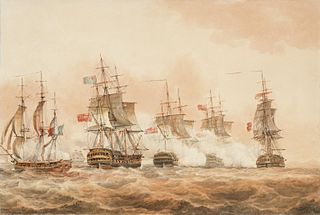
The Battle of Lissa, also known as the Battle of Vis was a naval action fought between a British frigate squadron and a much larger squadron of French and Italian frigates and smaller vessels on Wednesday, 13 March on 1811 during the Adriatic campaign of the Napoleonic Wars. The engagement was fought in the Adriatic Sea for possession of the strategically important Croatian island of Vis, from which the British squadron had been disrupting French shipping in the Adriatic. The French needed to control the Adriatic to supply a growing army in the Illyrian Provinces, and consequently dispatched an invasion force in March 1811 consisting of six frigates, numerous smaller craft and a battalion of Italian soldiers.

The Adriatic Sea is a body of water separating the Italian Peninsula from the Balkan Peninsula. The Adriatic is the northernmost arm of the Mediterranean Sea, extending from the Strait of Otranto to the northwest and the Po Valley. The countries with coasts on the Adriatic are Albania, Bosnia and Herzegovina, Croatia, Italy, Montenegro, and Slovenia.
A French and Italian fleet is defeated by a British squadron off the island of Vis in the Adriatic during the Napoleonic Wars.

The Battle of Lissa, also known as the Battle of Vis was a naval action fought between a British frigate squadron and a much larger squadron of French and Italian frigates and smaller vessels on Wednesday, 13 March on 1811 during the Adriatic campaign of the Napoleonic Wars. The engagement was fought in the Adriatic Sea for possession of the strategically important Croatian island of Vis, from which the British squadron had been disrupting French shipping in the Adriatic. The French needed to control the Adriatic to supply a growing army in the Illyrian Provinces, and consequently dispatched an invasion force in March 1811 consisting of six frigates, numerous smaller craft and a battalion of Italian soldiers.

Vis is a small Croatian island in the Adriatic Sea. It is the farthest inhabited island off the Croatian mainland. Before the end of World War I, the island was held by the Liburnians, the Republic of Venice, the Napoleonic Kingdom of Italy, and the Austrian Empire. During the 19th century, the sea to the north of Vis was the site of two naval battles. In 1920, the island was ceded to the Kingdom of Yugoslavia as part of the Treaty of Rapallo. During World War II, the island was the headquarters of the Yugoslav Partisan movement. After the war, Vis was used as a naval base for the Yugoslav People's Army until 1989. The island's main industries are viticulture, fishing, fish processing, and tourism.

The Adriatic Sea is a body of water separating the Italian Peninsula from the Balkan Peninsula. The Adriatic is the northernmost arm of the Mediterranean Sea, extending from the Strait of Otranto to the northwest and the Po Valley. The countries with coasts on the Adriatic are Albania, Bosnia and Herzegovina, Croatia, Italy, Montenegro, and Slovenia.

The Napoleonic Wars (1803–1815) were a series of major global conflicts pitting the French Empire and its allies, led by Napoleon I, against a fluctuating array of European states formed into various coalitions. It produced a period of French domination over most of continental Europe. The wars stemmed from the unresolved disputes associated with the French Revolution and the French Revolutionary Wars consisting of the War of the First Coalition (1792–1797) and the War of the Second Coalition (1798–1802). The Napoleonic Wars are often described as five conflicts, each termed after the coalition that fought Napoleon: the Third Coalition (1803–1806), the Fourth (1806–1807), the Fifth (1809), the Sixth (1813–1814), and the Seventh (1815) plus the Peninsular War (1807–1814) and the French invasion of Russia (1812).
Gustav IV Adolf of Sweden is deposed in the Coup of 1809.

Gustav IV Adolf or Gustav IV Adolph was King of Sweden from 1792 until he was deposed in a coup in 1809. He was also the last Swedish monarch to be the ruler of Finland.
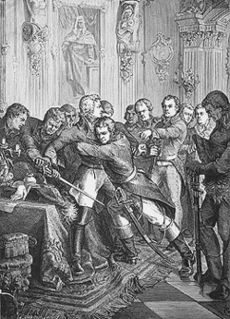
The Coup of 1809 also referred to as the Revolution of 1809 was a Swedish coup d'état by a group of noblemen led by Georg Adlersparre. The coup resulted in the deposition of King Gustav IV Adolf of Sweden and the introduction of the Instrument of Government (1809). The coup was provoked by the disastrous Finnish War. The leaders of the coup are known in history collectively as 1809 års män.
William Herschel discovered the planet Uranus from the garden of his house in Bath, England, initially considering it to be a comet.

Frederick William Herschel was a German-born British astronomer and composer. He frequently collaborated with his younger sister and fellow astronomer Caroline Herschel (1750–1848). Born in the Electorate of Hanover, William Herschel followed his father into the military band of Hanover, before emigrating to Great Britain in 1757 at the age of nineteen.

Uranus is the seventh planet from the Sun. Its name is a reference to the Greek god of the sky, Uranus (Caelus), who, according to Greek mythology, was the great-grandfather of Ares (Mars), grandfather of Zeus (Jupiter) and father of Cronus (Saturn). It has the third-largest planetary radius and fourth-largest planetary mass in the Solar System. Uranus is similar in composition to Neptune, and both have bulk chemical compositions which differ from that of the larger gas giants Jupiter and Saturn. For this reason, scientists often classify Uranus and Neptune as "ice giants" to distinguish them from the other giant planets.

Bath is a city in the Bath and North East Somerset unitary area in the county of Somerset, England, known for and named after its Roman-built baths. At the 2021 Census, the population was 101,557. Bath is in the valley of the River Avon, 97 miles (156 km) west of London and 11 miles (18 km) southeast of Bristol. The city became a World Heritage Site in 1987, and was later added to the transnational World Heritage Site known as the "Great Spa Towns of Europe" in 2021. Bath is also the largest city and settlement in Somerset.

A comet is an icy, small Solar System body that, when passing close to the Sun, warms and begins to release gases, a process that is called outgassing. This produces a visible atmosphere or coma, and sometimes also a tail. These phenomena are due to the effects of solar radiation and the solar wind acting upon the nucleus of the comet. Comet nuclei range from a few hundred meters to tens of kilometers across and are composed of loose collections of ice, dust, and small rocky particles. The coma may be up to 15 times Earth's diameter, while the tail may stretch beyond one astronomical unit. If sufficiently bright, a comet may be seen from Earth without the aid of a telescope and may subtend an arc of 30° across the sky. Comets have been observed and recorded since ancient times by many cultures and religions.
William Herschel discovers Uranus.

Frederick William Herschel was a German-born British astronomer and composer. He frequently collaborated with his younger sister and fellow astronomer Caroline Herschel (1750–1848). Born in the Electorate of Hanover, William Herschel followed his father into the military band of Hanover, before emigrating to Great Britain in 1757 at the age of nineteen.

Uranus is the seventh planet from the Sun. Its name is a reference to the Greek god of the sky, Uranus (Caelus), who, according to Greek mythology, was the great-grandfather of Ares (Mars), grandfather of Zeus (Jupiter) and father of Cronus (Saturn). It has the third-largest planetary radius and fourth-largest planetary mass in the Solar System. Uranus is similar in composition to Neptune, and both have bulk chemical compositions which differ from that of the larger gas giants Jupiter and Saturn. For this reason, scientists often classify Uranus and Neptune as "ice giants" to distinguish them from the other giant planets.
The Battle of Cartagena de Indias (part of the War of Jenkins' Ear) begins.

The Battle of Cartagena de Indias took place during the 1739 to 1748 War of Jenkins' Ear between Spain and Britain. The result of long-standing commercial tensions, the war was primarily fought in the Caribbean; the British tried to capture key Spanish ports in the region, including Porto Bello and Chagres in Panama, Havana, and Cartagena de Indias in present-day Colombia.

The War of Jenkins' Ear was a conflict between Britain and Spain lasting from 1739 to 1748, mainly in New Granada and among the West Indies of the Caribbean Sea, with major operations largely ended by 1742. Its name, coined by British historian Thomas Carlyle in 1858, refers to Robert Jenkins, a captain of a British merchant ship, whose ear was cut off by sailors of the Spanish coast guard when they boarded his smuggling brig, Rebecca, in April 1731. Seven years later, in support of mongering for war, Jenkins was paraded before the British Parliament, without his ear.
Nojpetén, capital of the Itza Maya kingdom, fell to Spanish conquistadors, the final step in the Spanish conquest of Guatemala.

Nojpetén was the capital city of the Itza Maya kingdom of Petén Itzá. It is located on an island in Lake Petén Itzá in the modern department of Petén in northern Guatemala. The island is now occupied by the modern town of Flores, the capital of the Petén department, and has had uninterrupted occupation since pre-Columbian times. Nojpetén had defensive walls built upon the low ground of the island, which may have been hastily constructed by the Itza at a time when they felt threatened either by the encroaching Spanish or by other Maya groups.

The Peten Itza kingdom was a kingdom centered on the island-city of Nojpetén on Lake Peten Itza.

Conquistadors or conquistadores were the explorer-soldiers of the Spanish and Portuguese Empires of the 15th and 16th centuries. During the Age of Discovery, conquistadors sailed beyond Europe to the Americas, Oceania, Africa, and Asia, colonizing and opening trade routes. They brought much of the Americas under the dominion of Spain and Portugal.

In a protracted conflict during the Spanish colonization of the Americas, Spanish colonisers gradually incorporated the territory that became the modern country of Guatemala into the colonial Viceroyalty of New Spain. Before the conquest, this territory contained a number of competing Mesoamerican kingdoms, the majority of which were Maya. Many conquistadors viewed the Maya as "infidels" who needed to be forcefully converted and pacified, disregarding the achievements of their civilization. The first contact between the Maya and European explorers came in the early 16th century when a Spanish ship sailing from Panama to Santo Domingo was wrecked on the east coast of the Yucatán Peninsula in 1511. Several Spanish expeditions followed in 1517 and 1519, making landfall on various parts of the Yucatán coast. The Spanish conquest of the Maya was a prolonged affair; the Maya kingdoms resisted integration into the Spanish Empire with such tenacity that their defeat took almost two centuries.
Nojpetén, capital of the last independent Maya kingdom, falls to Spanish conquistadors, the final step in the Spanish conquest of Guatemala.

Nojpetén was the capital city of the Itza Maya kingdom of Petén Itzá. It is located on an island in Lake Petén Itzá in the modern department of Petén in northern Guatemala. The island is now occupied by the modern town of Flores, the capital of the Petén department, and has had uninterrupted occupation since pre-Columbian times. Nojpetén had defensive walls built upon the low ground of the island, which may have been hastily constructed by the Itza at a time when they felt threatened either by the encroaching Spanish or by other Maya groups.

The Itza are a Maya ethnic group native to the Péten region of northern Guatemala and parts of Belize. The majority of Itza are inhabitants of the city of Flores on Lake Petén Itzá, and nearby portions of Belize where they form an ethnic minority.

Conquistadors or conquistadores were the explorer-soldiers of the Spanish and Portuguese Empires of the 15th and 16th centuries. During the Age of Discovery, conquistadors sailed beyond Europe to the Americas, Oceania, Africa, and Asia, colonizing and opening trade routes. They brought much of the Americas under the dominion of Spain and Portugal.

In a protracted conflict during the Spanish colonization of the Americas, Spanish colonisers gradually incorporated the territory that became the modern country of Guatemala into the colonial Viceroyalty of New Spain. Before the conquest, this territory contained a number of competing Mesoamerican kingdoms, the majority of which were Maya. Many conquistadors viewed the Maya as "infidels" who needed to be forcefully converted and pacified, disregarding the achievements of their civilization. The first contact between the Maya and European explorers came in the early 16th century when a Spanish ship sailing from Panama to Santo Domingo was wrecked on the east coast of the Yucatán Peninsula in 1511. Several Spanish expeditions followed in 1517 and 1519, making landfall on various parts of the Yucatán coast. The Spanish conquest of the Maya was a prolonged affair; the Maya kingdoms resisted integration into the Spanish Empire with such tenacity that their defeat took almost two centuries.
Harvard College in Cambridge, Massachusetts, was named after its first principal donor, clergyman John Harvard.

Harvard College is the undergraduate college of Harvard University, an Ivy League research university in Cambridge, Massachusetts. Founded in 1636, Harvard College is the original school of Harvard University, the oldest institution of higher learning in the United States and among the most prestigious in the world.

Cambridge is a city in Middlesex County, Massachusetts, United States. Part of the Boston metropolitan area, at the 2020 U.S. Census the city's population was 118,403, making it the fourth most populous city in the state, behind Boston, Worcester, and Springfield. It is one of two de jure county seats of Middlesex County, although the county's executive government was abolished in 1997. Situated directly north of Boston, across the Charles River, it was named in honor of the University of Cambridge in England, once also an important center of the Puritan theology embraced by the town's founders.

Harvard College, around which Harvard University eventually grew, was founded in 1636 in Cambridge, Massachusetts, making it the oldest institution of higher learning in the United States.

John Harvard (1607–1638) was an English dissenting minister in Colonial America whose deathbed bequest to the "schoale or colledge" founded two years earlier by the Massachusetts Bay Colony was so gratefully received that it was consequently ordered "that the Colledge agreed upon formerly to bee built at Cambridge shalbee called Harvard Colledge." Harvard University considers him the most honored of its founders—those whose efforts and contributions in its early days "ensure[d] its permanence"—and a statue in his honor is a prominent feature of Harvard Yard.
Harvard College is named after clergyman John Harvard.

Harvard College is the undergraduate college of Harvard University, an Ivy League research university in Cambridge, Massachusetts. Founded in 1636, Harvard College is the original school of Harvard University, the oldest institution of higher learning in the United States and among the most prestigious in the world.

John Harvard (1607–1638) was an English dissenting minister in Colonial America whose deathbed bequest to the "schoale or colledge" founded two years earlier by the Massachusetts Bay Colony was so gratefully received that it was consequently ordered "that the Colledge agreed upon formerly to bee built at Cambridge shalbee called Harvard Colledge." Harvard University considers him the most honored of its founders—those whose efforts and contributions in its early days "ensure[d] its permanence"—and a statue in his honor is a prominent feature of Harvard Yard.
At the Battle of Tondibi in Mali, Moroccan forces of the Saadi dynasty, led by Judar Pasha, defeat the Songhai Empire, despite being outnumbered by at least five to one.

The Battle of Tondibi was the decisive confrontation in the 16th-century invasion of the Songhai Empire by the army of the Saadi dynasty in Morocco. Though vastly outnumbered, the Moroccan forces under Judar Pasha defeated the Songhai Askia Ishaq II, guaranteeing the empire's downfall.
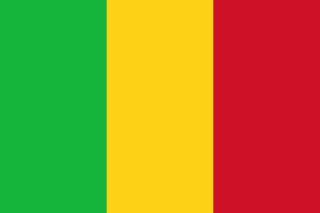
Mali, officially the Republic of Mali, is a landlocked country in West Africa. Mali is the eighth-largest country in Africa, with an area of over 1,240,000 square kilometres (480,000 sq mi). The population of Mali is 21.9 million. 67% of its population was estimated to be under the age of 25 in 2017. Its capital and largest city is Bamako. The sovereign state of Mali consists of eight regions and its borders on the north reach deep into the middle of the Sahara Desert. The country's southern part is in the Sudanian savanna, where the majority of inhabitants live, and both the Niger and Senegal rivers pass through. The country's economy centres on agriculture and mining. One of Mali's most prominent natural resources is gold, and the country is the third largest producer of gold on the African continent. It also exports salt.

Morocco, officially the Kingdom of Morocco, is the westernmost country in the Maghreb region of North Africa. It overlooks the Mediterranean Sea to the north and the Atlantic Ocean to the west, and has land borders with Algeria to the east, and the disputed territory of Western Sahara to the south. Morocco also claims the Spanish exclaves of Ceuta, Melilla and Peñón de Vélez de la Gomera, and several small Spanish-controlled islands off its coast. It spans an area of 446,300 km2 (172,300 sq mi) or 710,850 km2 (274,460 sq mi), with a population of roughly 37 million. Its official and predominant religion is Islam, and the official languages are Arabic and Berber; the Moroccan dialect of Arabic and French are also widely spoken. Moroccan identity and culture is a vibrant mix of Berber, Arab, and European cultures. Its capital is Rabat, while its largest city is Casablanca.

The Saadi Sultanate was a state which ruled present-day Morocco and parts of West Africa in the 16th and 17th centuries. It was led by the Saadi dynasty, an Arab Moroccan Sharifian dynasty.

The Songhai Empire was a state that dominated the western Sahel/Sudan in the 15th and 16th century. At its peak, it was one of the largest states in African history. The state is known by its historiographical name, derived from its leading ethnic group and ruling elite, the Songhai. Sonni Ali established Gao as the capital of the empire although a Songhai state had existed in and around Gao since the 11th century. Other important cities in the empire were Timbuktu and Djenné, conquered in 1468 and 1475 respectively, where urban-centered trade flourished and to the south is the north Akan state of Bonoman. Initially, the empire was ruled by the Sonni dynasty, but it was later replaced by the Askia dynasty (1493–1901).
A Spanish mercenary army surprised a band of rebels at the Battle of Oosterweel in the Habsburg Netherlands, beginning the Eighty Years' War.

The Battle of Oosterweel took place on 13 March 1567 near the village of Oosterweel, near Antwerp, in present-day Belgium, and is traditionally seen as the beginning of the Eighty Years' War. A Spanish mercenary army surprised a band of rebels and killed or captured almost all of them.

Habsburg Netherlands was the Renaissance period fiefs in the Low Countries held by the Holy Roman Empire's House of Habsburg. The rule began in 1482, when the last Valois-Burgundy ruler of the Netherlands, Mary, wife of Maximilian I of Austria, died. Their grandson, Emperor Charles V, was born in the Habsburg Netherlands and made Brussels one of his capitals.

The Eighty Years' War or Dutch Revolt (c.1566/1568–1648) was an armed conflict in the Habsburg Netherlands between disparate groups of rebels and the Spanish government. The causes of the war included the Reformation, centralisation, taxation, and the rights and privileges of the nobility and cities. After the initial stages, Philip II of Spain, the sovereign of the Netherlands, deployed his armies and regained control over most of the rebel-held territories. However, widespread mutinies in the Spanish army caused a general uprising. Under the leadership of the exiled William the Silent, the Catholic- and Protestant-dominated provinces sought to establish religious peace while jointly opposing the king's regime with the Pacification of Ghent, but the general rebellion failed to sustain itself. Despite Governor of Spanish Netherlands and General for Spain, the Duke of Parma's steady military and diplomatic successes, the Union of Utrecht continued their resistance, proclaiming their independence through the 1581 Act of Abjuration, and establishing the Protestant-dominated Dutch Republic in 1588. In the Ten Years thereafter, the Republic made remarkable conquests in the north and east against a struggling Spanish Empire, and received diplomatic recognition from France and England in 1596. The Dutch colonial empire emerged, which began with Dutch attacks on Portugal's overseas territories.
The Battle of Oosterweel, traditionally regarded as the start of the Eighty Years' War.

The Battle of Oosterweel took place on 13 March 1567 near the village of Oosterweel, near Antwerp, in present-day Belgium, and is traditionally seen as the beginning of the Eighty Years' War. A Spanish mercenary army surprised a band of rebels and killed or captured almost all of them.

The Eighty Years' War or Dutch Revolt (c.1566/1568–1648) was an armed conflict in the Habsburg Netherlands between disparate groups of rebels and the Spanish government. The causes of the war included the Reformation, centralisation, taxation, and the rights and privileges of the nobility and cities. After the initial stages, Philip II of Spain, the sovereign of the Netherlands, deployed his armies and regained control over most of the rebel-held territories. However, widespread mutinies in the Spanish army caused a general uprising. Under the leadership of the exiled William the Silent, the Catholic- and Protestant-dominated provinces sought to establish religious peace while jointly opposing the king's regime with the Pacification of Ghent, but the general rebellion failed to sustain itself. Despite Governor of Spanish Netherlands and General for Spain, the Duke of Parma's steady military and diplomatic successes, the Union of Utrecht continued their resistance, proclaiming their independence through the 1581 Act of Abjuration, and establishing the Protestant-dominated Dutch Republic in 1588. In the Ten Years thereafter, the Republic made remarkable conquests in the north and east against a struggling Spanish Empire, and received diplomatic recognition from France and England in 1596. The Dutch colonial empire emerged, which began with Dutch attacks on Portugal's overseas territories.
The Battle of Badr, the first major battle between the Muslims and Quraysh.

The Battle of Badr, also referred to as The Day of the Criterion in the Qur'an and by Muslims, was fought on 13 March 624 CE, near the present-day city of Badr, Al Madinah Province in Saudi Arabia. Muhammad, commanding an army of his Sahaba, defeated an army of the Quraysh led by Amr ibn Hishām, better known as Abu Jahl. The battle marked the beginning of the six-year war between Muhammad and his tribe. Prior to the battle, the Muslims and the Meccans had fought several smaller skirmishes in late 623 and early 624.
William Hurt, American actor (b. 1950) deaths

William McChord Hurt was an American actor. Known for his performances on stage and screen, he received various awards including an Academy Award, BAFTA Award and Cannes Film Festival Award for Best Actor.
Marvelous Marvin Hagler, American professional boxer (b. 1954) deaths
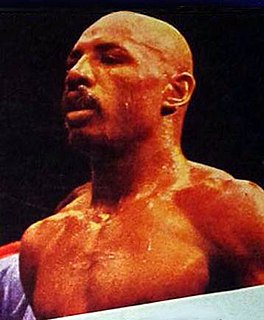
Marvelous Marvin Hagler was an American professional boxer and film actor. He competed in boxing from 1973 to 1987 and reigned as the undisputed champion of the middleweight division from 1980 to 1987, making twelve successful title defenses, all but one by knockout. Hagler also holds the highest knockout percentage of all undisputed middleweight champions at 78 percent. His undisputed middleweight championship reign of six years and seven months is the second-longest active reign of the last century. He holds the record for the sixth longest reign as champion in middleweight history. Nicknamed "Marvelous" and annoyed that network announcers often did not refer to him as such, Hagler legally changed his name to "Marvelous Marvin Hagler" in 1982.
Murray Walker, English motorsport commentator and journalist (b. 1923) deaths

Graeme Murray Walker was an English motorsport commentator and journalist. He provided television commentary of live Formula One coverage for the BBC between 1976 and 1996, and for ITV between 1997 and 2001.
Emily Nasrallah, Lebanese writer and women's rights activist. (b. 1931) deaths
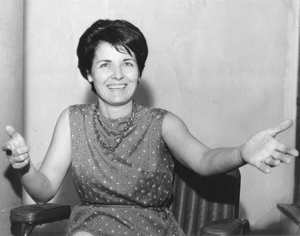
Emily Daoud Nasrallah was a Lebanese writer and women's rights activist.
Amy Krouse Rosenthal, American author (b. 1965) deaths

Amy Krouse Rosenthal was an American author of both adult and children's books, a short film maker, and radio show host. She is best known for her memoir Encyclopedia of an Ordinary Life, her children's picture books, and the film project The Beckoning of Lovely. She was a prolific writer, publishing more than 30 children's books between 2005 and her death in 2017. She is the only author to have three children's books make the Best Children's Books for Family Literacy list in the same year. She was a contributor to Chicago's NPR affiliate WBEZ, and to the TED conference.
Hilary Putnam, American philosopher, mathematician, and computer scientist (b. 1926) deaths
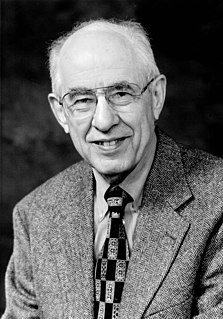
Hilary Whitehall Putnam was an American philosopher, mathematician, and computer scientist, and a major figure in analytic philosophy in the second half of the 20th century. He made significant contributions to philosophy of mind, philosophy of language, philosophy of mathematics, and philosophy of science. Outside philosophy, Putnam contributed to mathematics and computer science. Together with Martin Davis he developed the Davis–Putnam algorithm for the Boolean satisfiability problem and he helped demonstrate the unsolvability of Hilbert's tenth problem.
Al Rosen, American baseball player and manager (b. 1924) deaths
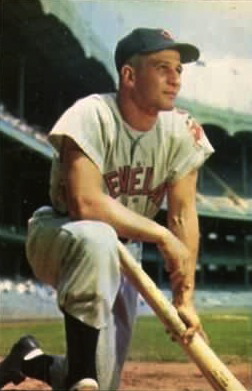
Albert Leonard Rosen, nicknamed "Flip" and "The Hebrew Hammer", was an American baseball third baseman and right-handed slugger for the Cleveland Indians of Major League Baseball for ten seasons in the 1940s and 1950s.
Reubin Askew, American sergeant, lawyer, and politician, 37th Governor of Florida (b. 1928) deaths

Reubin O'Donovan Askew was an American politician, who served as the 37th governor of Florida from 1971 to 1979. A member of the Democratic Party, he served as the 7th U.S. Trade representative from 1979 to 1980 under President Jimmy Carter. He led on tax reform, civil rights, and financial transparency for public officials, maintaining an outstanding reputation for personal integrity.

The governor of Florida is the head of government of the state of Florida and the commander-in-chief of the state's military forces. The governor has a duty to enforce state laws and the power to either approve or veto bills passed by the Florida Legislature, to convene the legislature and grant pardons, except in cases of impeachment.
Edward Haughey, Baron Ballyedmond, Irish businessman and politician (b. 1944) deaths

Edward Enda Haughey, Baron Ballyedmond, OBE, FRCVS, was an Irish-British entrepreneur and politician.
Ahmad Tejan Kabbah, Sierra Leonean economist, lawyer, and politician, 3rd President of Sierra Leone (b. 1932) deaths

Alhaji Ahmad Tejan Kabbah was a Sierra Leonean politician who served twice as the 3rd President of Sierra Leone, from 1996 to 1997 and again from 1998 to 2007. An economist and attorney by profession, Kabbah spent many years working for the United Nations Development Programme. He retired from the United Nations and returned to Sierra Leone in 1992.

The president of the Republic of Sierra Leone is the head of state and the head of government of Sierra Leone, as well as the commander-in-chief of the Armed Forces.
Icchokas Meras, Lithuanian-Israeli author and screenwriter (b. 1934) deaths

Icchokas Meras was a Lithuanian writer.
Clive Burr, English drummer and songwriter (b. 1957) deaths

Clive Ronald Burr was an English drummer. He was a member of the heavy metal band Iron Maiden from 1979 to 1982.
Rick Martin, Canadian-American ice hockey player (b. 1951) deaths
Richard Lionel Martin was a Canadian professional ice hockey winger who played in the NHL with the Buffalo Sabres and Los Angeles Kings for 11 seasons between 1971 and 1982. He was most famous for playing on the Sabres' French Connection line with Gilbert Perreault and Rene Robert.
Jean Ferrat, French singer-songwriter (b. 1930) deaths
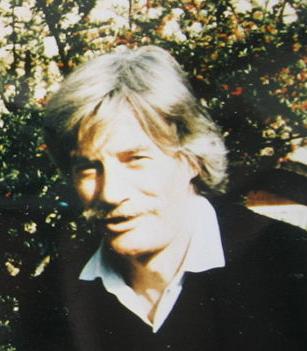
Jean Ferrat was a French singer-songwriter and poet. He specialized in singing poetry, particularly that of Louis Aragon. He had a left-wing sympathy that found its way into a few songs.
Betsy Blair, American actress (b. 1923) deaths

Betsy Blair was an American actress of film and stage, long based in London.
Alan W. Livingston, American businessman (b. 1917) deaths
Alan Wendell Livingston was an American businessman best known for his tenures at Capitol Records, first as a writer/producer best known for creating Bozo the Clown for a series of record-album and illustrative read-along children's book sets. As Vice-President in charge of Programming at NBC, in 1959 he oversaw the development and launch of the network's most successful television series, Bonanza.
Arnold Skaaland, American wrestler and manager (b. 1925) deaths

Arnold Skaaland was an American professional wrestler and professional wrestling manager.
Robert C. Baker, American businessman, invented the chicken nugget (b. 1921) deaths
Robert C. Baker was an American inventor and Cornell University professor. He invented the chicken nugget as well as many other poultry-related inventions. Due to his contributions to the poultry sciences, he is a member of the American Poultry Hall of Fame.

A chicken nugget is a food product consisting of a small piece of deboned chicken meat that is breaded or battered, then deep-fried or baked. Invented in the 1950s, chicken nuggets have become a very popular fast food restaurant item, as well as widely sold frozen for home use.
Jimmy Johnstone, Scottish footballer (b. 1944) deaths

James Connolly Johnstone was a Scottish footballer who played as an outside right. Known as "Jinky" for his elusive dribbling style, Johnstone played for Celtic for 13 years, and was part of the 'Lisbon Lions', the team who won the 1967 European Cup Final, as well as winning nine consecutive Scottish championships. He scored 129 goals for Celtic in 515 appearances and was voted the club's greatest ever player by fans in 2002.
Maureen Stapleton, American actress (b. 1925) deaths

Lois Maureen Stapleton was an American actress. She received numerous accolades, including an Academy Award, a Golden Globe Award, a BAFTA Award, a Primetime Emmy Award, and two Tony Awards, in addition to a nomination for a Grammy Award.
Peter Tomarken, American television personality, game show host (b. 1942) deaths
Peter David Tomarken was an American television personality primarily known as the host of the game show Press Your Luck.
Coco Gauff, American tennis player births

Cori Dionne "Coco" Gauff is an American professional tennis player. She has a career-high ranking of world No. 4 in singles, reached on October 24, 2022, and world No. 1 in doubles, achieved on August 15, 2022. Gauff won her first WTA Tour singles title at the 2019 Linz Open aged 15, making her the youngest singles title-holder on the Tour since 2004. She has won two WTA Tour singles titles and six doubles titles – three partnering with Caty McNally and three with Jessica Pegula. Gauff rose to prominence with a win over Venus Williams in the opening round of 2019 Wimbledon.
Franz König, Austrian cardinal (b. 1905) deaths

Franz König was an Austrian Cardinal of the Catholic Church. He served as archbishop of Vienna from 1956 to 1985, and was elevated to the cardinalate in 1958. The last surviving cardinal elevated by Pope John XXIII, he was the second-oldest and longest-serving cardinal worldwide at the time of his death.
Hans-Georg Gadamer, German philosopher and scholar (b. 1900) deaths

Hans-Georg Gadamer was a German philosopher of the continental tradition, best known for his 1960 magnum opus, Truth and Method, on hermeneutics.
Thomas Dearden, Australian rugby league player births

Tom Dearden is an Australian professional rugby league footballer who plays as a five-eighth or halfback for the North Queensland Cowboys in the NRL.
John A. Alonzo, American actor and cinematographer (b. 1934) deaths
John A. Alonzo, ASC was an American cinematographer, television director, and actor known for his diverse body of work in both film and television.
Encarnacion Alzona, Filipino historian and educator (b. 1895) deaths
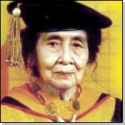
Encarnación A. Alzona was a pioneering Filipino historian, educator and suffragist. The first Filipino woman to obtain a Ph.D., she was conferred in 1985 the rank and title of National Scientist of the Philippines.
Lee Falk, American cartoonist, director, and producer (b. 1911) deaths

Lee Falk, born Leon Harrison Gross, was an American cartoonist, writer, theater director, and producer, best known as the creator of the comic strips Mandrake the Magician and The Phantom. At the height of their popularity, these strips attracted over 100 million readers every day. Falk also wrote short stories, and he contributed to a series of paperback novels about The Phantom.
Garson Kanin, American director and screenwriter (b. 1912) deaths
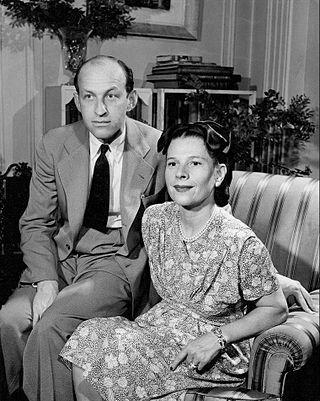
Garson Kanin was an American writer and director of plays and films.
Jay-Roy Grot, Dutch footballer births
Jay-Roy Jornell Grot is a Dutch professional footballer who plays as a striker or right winger for Danish Superliga club Viborg FF. He also played for Netherlands U21s.
Judge Dread, English singer-songwriter (b. 1945) deaths

Alexander Minto Hughes, better known as Judge Dread, was an English reggae and ska musician. He was the first white recording artist to have a reggae hit in Jamaica, and the BBC has banned more of his songs than those of any other recording artist, because of his frequent use of sexual innuendo and double entendres. Following his death, Rolling Stone reported, "He sold several million albums throughout his 25-plus year career and was second only to Bob Marley in U.K. reggae sales during the 1970s".
Hans von Ohain, German-American physicist and engineer (b. 1911) deaths
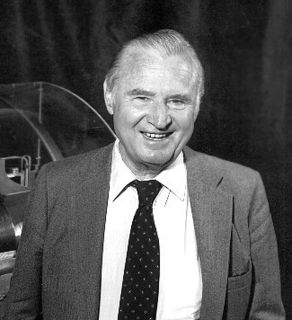
Hans Joachim Pabst von Ohain was a German physicist, engineer, and the designer of the first operational jet engine. His first test unit ran on hydrogen in March 1937, and it was a later development that powered the world's first flyable all-jet aircraft, the experimental Heinkel He 178 in late August 1939. In spite of these early successes, which started the world´s first jet producing industry in Germany, other German designs quickly eclipsed Ohain's, and none of his engine designs entered widespread production or operational use.
Krzysztof Kieślowski, Polish director and screenwriter (b. 1941) deaths
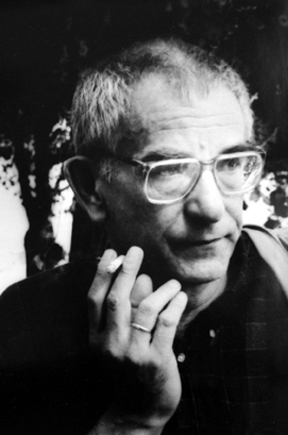
Krzysztof Kieślowski was a Polish film director and screenwriter. He is known internationally for Dekalog (1989), The Double Life of Veronique (1991), and the Three Colours trilogy (1993 –1994). Kieślowski received numerous awards during his career, including the Cannes Film Festival Jury Prize (1988), FIPRESCI Prize, and Prize of the Ecumenical Jury (1991); the Venice Film Festival FIPRESCI Prize (1989), Golden Lion (1993), and OCIC Award (1993); and the Berlin International Film Festival Silver Bear (1994). In 1995, he received Academy Award nominations for Best Director and Best Original Screenplay.
Jang Su-jeong, South Korean tennis player births

Jang Su-jeong is a South Korean tennis player.
Mikaela Shiffrin, American skier births

Mikaela Pauline Shiffrin is an American two-time Olympic Gold Medalist and World Cup alpine skier. She is a four-time Overall World Cup champion, a four-time world champion in slalom, and a six-time winner of the World Cup discipline title in that event. Shiffrin is the youngest slalom champion in Olympic alpine skiing history, at 18 years and 345 days.
Odette Hallowes, French nurse and spy (b. 1912) deaths

Odette Sansom, also known as Odette Churchill and Odette Hallowes, code named Lise, was an agent for the United Kingdom's clandestine Special Operations Executive (SOE) in France during the Second World War. She was the first woman to be awarded the George Cross by the United Kingdom and was awarded the Légion d'honneur by France.
Gerard Deulofeu, Spanish footballer births
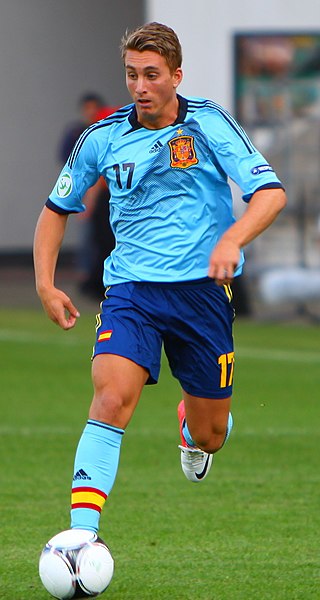
Gerard Deulofeu Lázaro is a Spanish professional footballer who plays for Serie A club Udinese. Mainly a forward, he can also play as a winger on both flanks.
Daniel Greig, Australian speed skater births
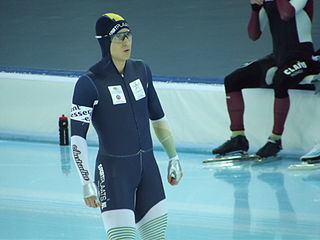
Daniel Greig is an Australian speed skater. He was selected for Australia as a speed skater during the 2014 Winter Olympics for the men's 500, 1000 and 1500 m events. During the 2014 World Sprint Speed Skating Championships he won a bronze medal.
Tristan Thompson, American basketball player births
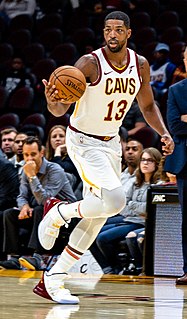
Tristan Trevor James Thompson is a Canadian-American professional basketball player who last played for the Chicago Bulls of the National Basketball Association (NBA). He won the 2016 NBA Finals with the Cleveland Cavaliers and has also played in the NBA for the Boston Celtics, Sacramento Kings, and Indiana Pacers.
Anicet Abel, Malagasy footballer births

Anicet Abel Andrianantenaina is a Malagasy professional footballer who plays as a midfielder for Beroe Stara Zagora in Bulgaria.
Bruno Bettelheim, Austrian-American psychologist and author (b. 1903) deaths
Bruno Bettelheim was an Austrian-born psychologist, scholar, public intellectual and writer who spent most of his academic and clinical career in the United States. An early writer on autism, Bettelheim's work focused on the education of emotionally disturbed children, as well as Freudian psychology more generally. In the U.S., he later gained a position as professor at the University of Chicago and director of the Sonia Shankman Orthogenic School for Disturbed Children, and after 1973 taught at Stanford University.
Holger Badstuber, German footballer births

Holger Felix Badstuber is a German former professional footballer who played as a centre-back or left-back.
Marko Marin, German footballer births
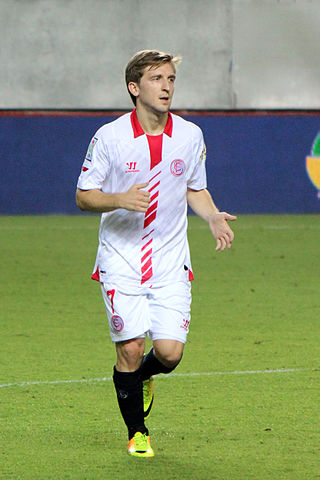
Marko Marin is a German former professional footballer who played as an attacking midfielder and left winger. He was known for his acceleration, dribbling, agility, creativity, versatility, technical skill and playmaking ability.
Robert Wickens, Canadian racing driver births
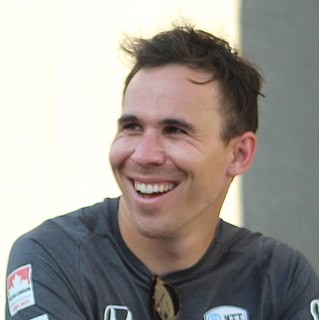
Robert Tyler Wickens is a Canadian racing driver from Guelph, Ontario, driving in the Michelin Pilot Challenge for Bryan Herta Autosport. In 2009 he finished in second place in the FIA Formula Two Championship, and in 2010 he was runner-up in the GP3 Series. In his return to Formula Renault 3.5, where he competed in 2008, he won the 2011 season championship with Carlin Motorsport, with backing of Marussia. Wickens then left the series to race in the DTM for the HWA Team.
Furdjel Narsingh, Dutch footballer births
Furdjel Robby Narsingh is a Dutch professional footballer who plays as a winger for FC Ararat-Armenia in the Armenian Premier League. He formerly played for AZ, Volendam, Telstar and PEC Zwolle.
Marco Andretti, American race car driver births

Marco Michael Andretti is an American auto racing driver who drives the No. 98 car for Andretti Herta Autosport part-time in the IndyCar Series. He is the third generation of the famous Andretti racing family. He is the 2022 SRX Series champion.
Andreas Beck, German footballer births
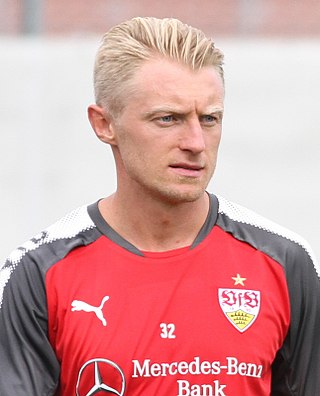
Andreas Beck is a professional footballer who plays as a right-back. Born in the Soviet Union, he represented Germany at youth and senior levels.
Neil Wagner, South African-New Zealand cricketer births

Neil Wagner is a South African-born New Zealand Test cricketer who plays for New Zealand and Northern Districts cricket teams. He played for Northerns until 2007/08 and Otago between 2008 and 2018.
Alcides Araújo Alves, Brazilian footballer births

Alcides Eduardo Mendes de Araújo Alves, known simply as Alcides, is a Brazilian former professional footballer who played as either a right back or a central defender.
Emile Hirsch, American actor births

Emile Davenport Hirsch is an American actor. He played Chris McCandless in Into the Wild (2007). Other notable film roles include The Girl Next Door (2004), Lords of Dogtown (2005), Alpha Dog (2006), Speed Racer (2008), Milk (2008), Lone Survivor (2013), An Evening with Beverly Luff Linn (2018), and Once Upon a Time in Hollywood (2019).
Geeta Basra, Indian actress births

Geeta Basra Singh is a British actress who has appeared in Bollywood films. She is married to Indian cricketer Harbhajan Singh. Cricketer Harbhajan Singh and model/actor Geeta Basra got married at a ceremony in a gurudwara near Jalandhar. Bollywood actress, Geeta Basra revealed how she was written off as a married woman, even when she and Harbhajan Singh were just friends.
Kaitlin Sandeno, American swimmer births
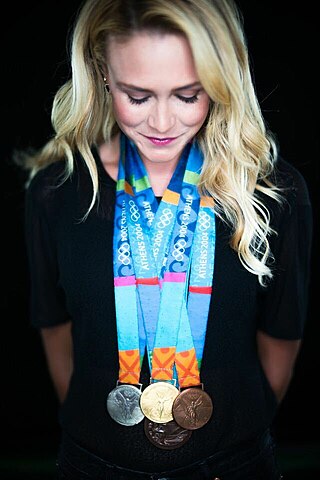
Kaitlin Shea Sandeno is an American former competition swimmer who is an Olympic gold medalist, world champion and former world record-holder. Sandeno was a member of the American team that set a new world record in the 4×200-meter freestyle relay at the 2004 Summer Olympics. She is the current general manager of DC Trident which is a part of the International Swimming League.
Paul Citroen, German-Dutch illustrator and educator (b. 1896) deaths

Roelof Paul Citroen was a German-born Dutch artist, art educator and co-founder of the New Art Academy in Amsterdam. Among his best-known works are the photo-montage Metropolis and the 1949 Dutch postage stamps.
Nicole Ohlde, American basketball player births
Nicole Katherine Ohlde is a former American professional basketball player. She most recently played for the Phoenix Mercury and the Tulsa Shock of the Women's National Basketball Association.
Olena Kot, Ukrainian Journalist births
Olena Vasilivna Kot was a Ukrainian Journalist who worked at Ukraina 24.
Caron Butler, American basketball player births

James Caron Butler is an American professional basketball coach and former player who is an assistant coach for the Miami Heat of the National Basketball Association (NBA). During a 14-year career he played for the Miami Heat, Los Angeles Lakers, Washington Wizards, Dallas Mavericks, Los Angeles Clippers, Milwaukee Bucks, Oklahoma City Thunder, Detroit Pistons, and Sacramento Kings of the National Basketball Association (NBA). Butler is a two-time NBA All-Star and was the 2002 Big East Conference Men's Basketball Player of the Year, while playing for the Connecticut Huskies.
Brad Watts, Australian rugby league player births
Brad Watts is an Australian former professional rugby league footballer who competed in the National Rugby League. He played for the Melbourne Storm from 1999 to 2001, then for the South Sydney Rabbitohs from 2002 to 2005. Watts also played with the Widnes Vikings club in the then Super League in 2005. He usually played fullback, but later moved to halfback.
Johan Santana, Venezuelan-American baseball player births

Johan Alexander Santana Araque is a Venezuelan former professional baseball starting pitcher. Santana pitched in Major League Baseball (MLB) for the Minnesota Twins from 2000 to 2007 and for the New York Mets from 2008 to 2012. A two-time Cy Young Award winner with the Twins, Santana is a four-time All-Star and earned a pitching triple crown in 2006. On June 1, 2012, Santana pitched the first no-hitter in New York Mets history against the St. Louis Cardinals.
Cédric Van Branteghem, Belgian sprinter births

Cédric Marie Carlos Thérèse Van Branteghem is a Belgian sprinter, who specializes in the 400 metres.
Tom Danielson, American cyclist births
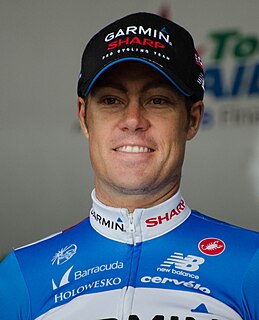
Thomas Danielson is an American retired professional road racing cyclist who competed professionally between 2002 and 2015 for the Mercury Cycling Team (2002), the Saturn Cycling Team (2003), Fassa Bortolo (2004), Discovery Channel (2005–2007) and Cannondale–Garmin (2008–2015). He had been suspended twice for doping in his career.
Kenny Watson, American football player births

Kenneth Dwight Watson is a former American football running back in the National Football League (NFL). He was signed by the Washington Redskins as an undrafted free agent in 2001. He played college football at Penn State.
Troy Hudson, American basketball player and rapper births
Troy Elderon Hudson is an American retired professional basketball point guard. He played 11 years in the National Basketball Association (NBA) after going undrafted in 1997. He averaged a career-high 14.2 points per game with the Minnesota Timberwolves in the 2002–03 season.
Danny Masterson, American actor and producer births

Daniel Peter Masterson is an American actor. He played the roles of Steven Hyde in That '70s Show (1998–2006), Milo Foster in Men at Work (2012–2014) and Jameson "Rooster" Bennett in The Ranch (2016–2018). On June 17, 2020, he was arrested and charged with three counts of forcible rape, which he has categorically denied.
Ole Haugsrud, American sports executive (b. 1900) deaths
Oluf Roy Haugsrud was an American sports executive. Haugsrud was born in Superior, Wisconsin.
Mark Clattenburg, English football referee births

Mark Clattenburg is an English professional football referee.
Ivo Andrić, Yugoslav novelist, poet, and short story writer, Nobel Prize laureate (b. 1892) deaths

Ivo Andrić was a Yugoslav novelist, poet and short story writer who won the Nobel Prize in Literature in 1961. His writings dealt mainly with life in his native Bosnia under Ottoman rule.

The Nobel Prize in Literature is a Swedish literature prize that is awarded annually, since 1901, to an author from any country who has, in the words of the will of Swedish industrialist Alfred Nobel, "in the field of literature, produced the most outstanding work in an idealistic direction". Though individual works are sometimes cited as being particularly noteworthy, the award is based on an author's body of work as a whole. The Swedish Academy decides who, if anyone, will receive the prize. The academy announces the name of the laureate in early October. It is one of the five Nobel Prizes established by the will of Alfred Nobel in 1895. Literature is traditionally the final award presented at the Nobel Prize ceremony. On some occasions the award has been postponed to the following year, most recently in 2018 as of May 2022.
James Brinkley, Scottish cricketer births
James Drinkley is a Scottish cricketer. He is a right-handed batsman and a right-arm medium-fast bowler. He played five One-day Internationals in May 1999. He played List A cricket until 2004 and participated in the 2001 ICC Trophy.
Thomas Enqvist, Swedish tennis player and sportscaster births
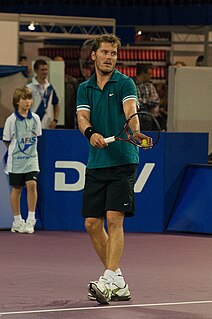
Thomas Karl Johan Enqvist is a Swedish former professional tennis player. He reached the final of the 1999 Australian Open and won a total of 19 singles titles, including three Masters titles. He has a career high ATP world singles ranking of No. 4, achieved on 15 November 1999.
Edgar Davids, Surinamese born Dutch international footballer and manager births

Edgar Steven Davids is a Dutch-Surinamese former professional footballer and current coach.
Bobby Jackson, American basketball player and coach births
Bobby Jackson is an American professional basketball coach and former player. He serves as the head coach of the Stockton Kings in the NBA G League, the development affiliate of the Sacramento Kings of the National Basketball Association (NBA).
Common, American rapper and actor births
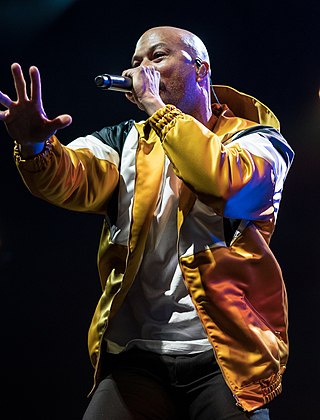
Lonnie Rashid Lynn, known by his stage name Common, is an American rapper and actor. He debuted in 1992 with the album Can I Borrow a Dollar?, and gained critical acclaim with his 1994 album Resurrection. He maintained an underground following into the late 1990s. He achieved mainstream success through his work with the Soulquarians.
Tony Ray-Jones, English photographer (b. 1941) deaths
Tony Ray-Jones was an English photographer.
Annabeth Gish, American actress births

Anne Elizabeth "Annabeth" Gish is an American actress. She has played roles in films Shag, Hiding Out, Mystic Pizza, SLC Punk!, The Last Supper and Double Jeopardy. On television, she played Special Agent Monica Reyes on The X-Files, Elizabeth Bartlet Westin on The West Wing, Diane Gould on Halt and Catch Fire, Eileen Caffee on Brotherhood, Charlotte Millwright on The Bridge and Sheriff Althea Jarry on the seventh and final season of Sons of Anarchy.
Allan Nielsen, Danish international footballer and manager births
Allan Nielsen is a Danish former professional footballer whose most notable period of football was four years at English Premier League club Tottenham Hotspur with whom he won the 1999 League Cup, scoring the winning goal.
Rockwell Kent, American painter and illustrator (b. 1882) deaths

Rockwell Kent was an American painter, printmaker, illustrator, writer, sailor, adventurer and voyager.
Tim Story, American director and producer births
Timothy Kevin Story is an African American film director. He is best known for Barbershop (2002), the Fantastic Four (2005) and the Ride Along franchise. He has been nominated for two NAACP Image Awards for Outstanding Directing in a Feature Film/Television Movie in 2006 and 2013.
Darren Fritz, Australian rugby league player births
Darren Fritz is an Australian former professional rugby league footballer who played in the 1980s and 1990s. He played at representative level for Queensland, and at club level for Canberra Raiders, Wakefield Trinity, Illawarra Steelers, North Sydney and Western Suburbs, as a prop, or second-row, i.e. number 8 or 10, or, 11 or 12.
Andrés Escobar, Colombian footballer (d. 1994) births

Andrés Escobar Saldarriaga was a Colombian footballer who played as a defender. He played for Atlético Nacional, BSC Young Boys, and the Colombia national team. Nicknamed The Gentleman, he was known for his clean style of play and calmness on the pitch.
Pieter Vink, Dutch footballer and referee births

Pieter Vink is a former Dutch football referee, who also officiated for FIFA and UEFA. He was the first referee to take charge of a match at the "New Wembley Stadium" in 2007. His other occupation was as a police officer, eventually giving this up to become a full-time referee. His main other hobby is golf.
Chico Science, Brazilian singer-songwriter (d. 1997) births

Francisco de Assis França, better known as Chico Science, was a Brazilian singer and composer and one of the founders of the manguebeat cultural movement. He died in a car accident in 1997 in Recife, Pernambuco, at the age of 30.
Vittorio Jano, Italian engineer (b. 1891) deaths

Vittorio Jano was an Italian automobile designer of Hungarian descent from the 1920s through 1960s.
Fan Noli, Albanian-American bishop and politician, 14th Prime Minister of Albania (b. 1882) deaths

Theofan Stilian Noli, known as Fan Noli, was an Albanian writer, scholar, diplomat, politician, historian, orator, Archbishop, Metropolitan and founder of the Albanian Orthodox Church and the Albanian Orthodox Archdiocese in America who served as Prime Minister and regent of Albania in 1924 during the June Revolution.

The Prime Minister of Albania, officially styled Prime Minister of the Republic of Albania, is the head of government of the Republic of Albania and the most powerful and influential person in Albanian politics. The prime minister holds the executive power of the nation and represents the Council of Ministers and chairs its meetings.
Will Clark, American baseball player births

William Nuschler Clark Jr. is an American professional baseball first baseman who played in Major League Baseball (MLB) from 1986 through 2000. He played for the San Francisco Giants, Texas Rangers, Baltimore Orioles, and St. Louis Cardinals. Clark was known by the nickname of "Will the Thrill." The nickname has often been truncated to simply, "the Thrill."
Craig Dimond, Australian rugby league player births
Craig Dimond is an Australian former professional rugby league footballer who played in the 1980s and 1990s. He played his club football career for the Illawarra Steelers, Cronulla-Sutherland Sharks and Canberra Raiders. He is the son of Peter Dimond, and nephew of Bobby Dimond, both Australian former rugby league test players.
Trevor Gillmeister Australian rugby league player and coach births
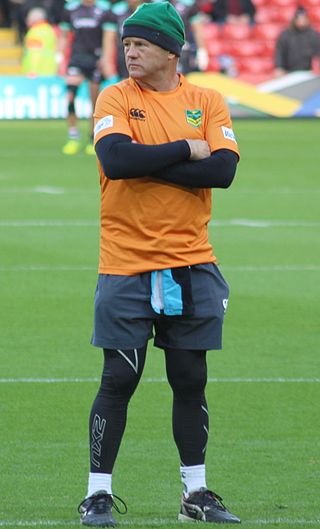
Trevor Gillmeister is an Australian former professional rugby league footballer who is employed as a rugby league analyst at Channel 7 Brisbane. During his playing days, Gillmeister played for the Eastern Suburbs Roosters, Brisbane Broncos, Penrith Panthers and the South Queensland Crushers, as well as representing Queensland and Australia.
Vance Johnson, American football player births
Vance Edward Johnson, is a former professional American football player who was selected by the Denver Broncos in the second round of the 1985 NFL Draft.
Anne Acheson, Irish sculptor (b. 1882) deaths
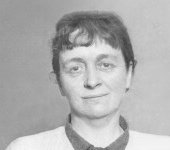
Anne Crawford Acheson was a British-Irish sculptor. She and Elinor Hallé invented plaster casts for soldier's broken limbs. Acheson exhibited at the Royal Academy and internationally. She was awarded the CBE in 1919. During the First World War she worked for the Surgical Requisites Association at Mulberry Walk in Chelsea, London. Acheson received the Gleichen Memorial Award in 1938. She divided her time between London and Glenavy, County Antrim, Northern Ireland.
Adam Clayton, English-Irish musician and songwriter births
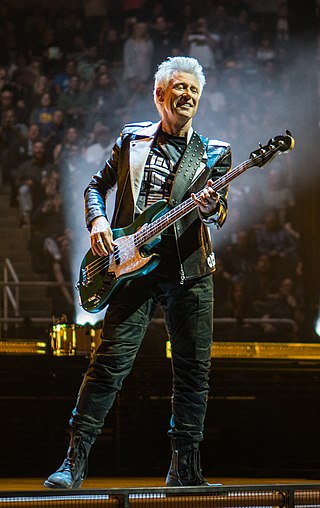
Adam Charles Clayton is an English-born Irish musician who is the bass guitarist of the rock band U2. He has resided in County Dublin, Ireland since his family moved to Malahide in 1965, when he was five years old. Clayton attended Mount Temple Comprehensive School, where he met schoolmates with whom he co-founded U2 in 1976. A member of the band since its inception, he has recorded 14 studio albums with U2.
Joe Ranft, American animator, screenwriter, and voice actor (d. 2005) births

Joseph Henry Ranft was an American screenwriter, animator, storyboard artist and voice actor. He worked for Pixar Animation Studios and Disney at Walt Disney Animation Studios and Disney Television Animation. His younger brother Jerome Ranft is a sculptor who also worked on several Pixar films.
Dirk Wellham, Australian cricketer births
Dirk MacDonald Wellham is a former Australian cricketer who played in six Test matches and 17 One Day Internationals (ODIs) between 1981 and 1987. He is one of three players to score a century in both his first class and Test debuts. He was the first player to captain three Australian states having captained New South Wales, Tasmania and Queensland during his career. As NSW captain, he won the Sheffield Shield in 1984–85 and 1985–86 and the McDonald's Cup in 1984–85.He is the nephew of New South Wales first-class cricketer Walter Wellham.
Mágico González, Salvadoran footballer births

Jorge Alberto González Barillas, popularly known as El Mágico, is a Salvadoran former footballer who played mainly as a forward.
Rick Lazio, American lawyer and politician births
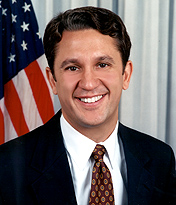
Enrico Anthony Lazio is an American attorney and former four-term U.S. Representative from the State of New York. A Long Island native, Lazio became well-known during his bid for U.S. Senate in New York's 2000 Senate election; he was defeated by Hillary Rodham Clinton. Lazio also ran unsuccessfully for the 2010 New York State Republican Party gubernatorial nomination.
Caryl Phillips, Caribbean-English author and playwright births

Caryl Phillips is a Kittitian-British novelist, playwright and essayist. Best known for his novels, Phillips is often described as a Black Atlantic writer, since much of his fictional output is defined by its interest in, and searching exploration of, the experiences of peoples of the African diaspora in England, the Caribbean and the United States. As well as writing, Phillips has worked as an academic at numerous institutions including Amherst College, Barnard College, and Yale University, where he has held the position of Professor of English since 2005.
John Hoeven, American banker and politician, 31st Governor of North Dakota births

John Henry Hoeven III is an American banker and politician serving as the senior U.S. senator from North Dakota since 2011. A Republican, he served as the 31st governor of North Dakota from 2000 to 2010. In 2010, Hoeven was elected to the U.S. Senate, succeeding Senator Byron Dorgan, who chose not to seek reelection. Hoeven became North Dakota's senior senator in 2013 after Kent Conrad retired and was succeeded by Heidi Heitkamp, who was once Hoeven's opponent for the governor's office.

The governor of North Dakota is the head of government of North Dakota and serves as the commander-in-chief of the state's military forces.
Moses Hogan, American composer and conductor (d. 2003) births
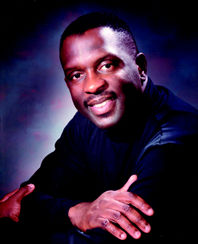
Moses George Hogan was an American composer and arranger of choral music. He was best known for his settings of spirituals. Hogan was a pianist, conductor, and arranger of international renown. His works are celebrated and performed by high school, college, church, community, and professional choirs today. Over his lifetime, he published 88 arrangements for voice, eight of which were solo pieces.
Dana Delany, American actress and producer births

Dana Welles Delany is an American actress. After appearing in small roles early in her career, Delany received her breakthrough role as Colleen McMurphy on the ABC television drama China Beach (1988–1991), for which she twice received the Primetime Emmy Award for Outstanding Lead Actress in a Drama Series in 1989 and 1992. She received further recognition for her appearances in the films Light Sleeper (1992), Tombstone (1993), Exit to Eden (1994), The Margaret Sanger Story (1995), Fly Away Home (1996), True Women (1997), and Wide Awake (1998). Delany is also a known voice actress, having voiced characters in the DC Animated Universe, notably as Andrea Beaumont in Batman: Mask of the Phantasm and Lois Lane in Superman: The Animated Series, Justice League and Justice League Unlimited, subsequently reprising the latter role in several projects unrelated to the DCAU.
Bruno Conti, Italian footballer and manager births

Bruno Conti is an Italian football manager and former player. He is currently head of A.S. Roma's youth sector.
Glenne Headly, American actress (d. 2017) births

Glenne Aimee Headly was an American actress. She was widely known for her roles in Dirty Rotten Scoundrels, Dick Tracy, and Mr. Holland's Opus. Headly received a Theatre World Award and four Joseph Jefferson Awards and was nominated for two Primetime Emmy Awards.
Olga Rukavishnikova, Russian pentathlete births

Olga Aleksandrovna Rukavishnikova is a Soviet athlete who mainly competed in the women's pentathlon event during her career.
Valerie Amos, Baroness Amos, Guyanese-English politician and diplomat births

Valerie Ann Amos, Baroness Amos, is a British Labour Party politician and diplomat who served as the eighth UN Under-Secretary-General for Humanitarian Affairs and Emergency Relief Coordinator. Before her appointment to the UN, she served as British High Commissioner to Australia. She was created a life peer in 1997, serving as Leader of the House of Lords and Lord President of the Council from 2003 to 2007. Since September 2020, Amos has been Master of University College, Oxford, succeeding Sir Ivor Crewe and becoming the first-ever black head of an Oxford college, as well as the first woman appointed to the post.
Robin Duke, Canadian actress and screenwriter births
Robin Duke is a Canadian actress, comedian, and voice actress. Duke may be best known for her work on the television comedy series SCTV and, later, Saturday Night Live. She co-founded Women Fully Clothed, a sketch comedy troupe which toured Canada. She teaches writing as a faculty member at Humber College in Toronto and had a recurring role playing Wendy Kurtz in the sitcom Schitt's Creek.
Andy Bean, American golfer births
Thomas Andrew Bean is an American professional golfer who played on the PGA Tour and the Champions Tour.
Michael Curry, 27th presiding bishop of the Episcopal Church births
Michael Bruce Curry is an American bishop who is the 27th and current presiding bishop and primate of The Episcopal Church. Elected in 2015, he is the first African American to serve as presiding bishop in The Episcopal Church. He was previously bishop of the Diocese of North Carolina.
Johan Laidoner, Estonian general and statesman (b. 1884) deaths

Johan Laidoner was an Estonian general and statesman. He served as Commander‑in‑Chief of the Estonian Armed Forces during the 1918–1920 Estonian War of Independence and was among the most influential people in the Estonian politics between the world wars.
Wolfgang Rihm, German composer and educator births
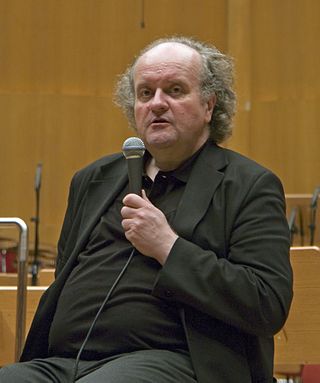
Wolfgang Rihm is a German composer and academic teacher. He is musical director of the Institute of New Music and Media at the University of Music Karlsruhe and has been composer in residence at the Lucerne Festival and the Salzburg Festival. He was honoured as Officier of the Ordre des Arts et des Lettres in 2001. His musical work includes more than 500 works. In 2012, The Guardian wrote: "enormous output and bewildering variety of styles and sounds".
Tim Sebastian, English journalist and author births
Tim Sebastian is a television journalist and novelist. He is the moderator of Conflict Zone and The New Arab Debates, broadcast on Deutsche Welle. He previously worked for the BBC, where he hosted The Doha Debates and was the first presenter of HARDtalk. He also presented Bloomberg TV's The Outsider, an India-focused debating programme.
Charo, Spanish-American singer, guitarist, and actress births

María Rosario Pilar Martínez Molina Baeza, professionally known by her stage name Charo, is a Spanish-American actress, singer, comedian, and flamenco guitarist.
Ants "the Terrible" Kaljurand, Estonian anti-communist, freedom fighter and forest brother (b. 1917) deaths

Ants Kaljurand popularly known as Ants the Terrible,, was a Estonian Nazi collaborator, anti-communist, and forest brother during and after World War II.

The Guerrilla war in the Baltic states was an armed struggle which was waged by the Latvian, Lithuanian, and Estonian partisans, called the Forest Brothers, against the Soviet Union during the Soviet invasion and occupation of the three Baltic states both during and after World War II. Similar anti-Soviet Central and Eastern European resistance groups fought against Soviet and communist rule in Bulgaria, Poland, Romania, and western Ukraine.
Joe Bugner, Hungarian-British boxer and actor births

József Kreul Bugner is a Hungarian-born British-Australian former heavyweight boxer and actor. He holds triple nationality, being a citizen of Hungary and a naturalised citizen of both Australia and the United Kingdom. He unsuccessfully challenged Muhammad Ali for the heavyweight championship in 1975, losing by unanimous decision. As an actor, he is best known for his role in the 1994 action film Street Fighter alongside Jean-Claude Van Damme and Raul Julia.
Bernard Julien, Trinidadian cricketer births
Bernard Denis Julien is a Trinidad and Tobago cricketer who played as an allrounder. As a right handed batsman who bowled left arm pace and spin, Julien played in 24 Tests and 12 One Day Internationals for the West Indies. He was a noteworthy member of the Windies' 1975 World Cup winning squad. Julien also featured for Trinidad and Tobago and English side Kent in his cricketing career.
Charles Krauthammer, American physician, journalist, and author (d. 2018) births

Charles Krauthammer was an American political columnist. A moderate liberal who turned independent conservative as a political pundit, Krauthammer won the Pulitzer Prize for his columns in The Washington Post in 1987. His weekly column was syndicated to more than 400 publications worldwide. While in his first year studying medicine at Harvard Medical School, Krauthammer became permanently paralyzed from the waist down after a diving board accident that severed his spinal cord at cervical spinal nerve 5. After spending 14 months recovering in a hospital, he returned to medical school, graduating to become a psychiatrist involved in the creation of the Diagnostic and Statistical Manual of Mental Disorders III in 1980. He joined the Carter administration in 1978 as a director of psychiatric research, eventually becoming the speechwriter to Vice President Walter Mondale in 1980.
William H. Macy, American actor, director, and screenwriter births

William Hall Macy Jr. is an American actor. His film career has been built on appearances in small, independent films, though he has also appeared in mainstream films. Some of his best known starring roles include those in Fargo (1996), Air Force One (1997), Boogie Nights (1997), Magnolia (1999), Jurassic Park III (2001), Seabiscuit (2003), Thank You for Smoking (2005), and The Lincoln Lawyer (2011). Macy has won two Emmy Awards and four Screen Actors Guild Awards, while his performance in Fargo earned a nomination for the Academy Award for Best Supporting Actor. From 2011 to 2021, he played Frank Gallagher, a main character in Shameless, the Showtime adaptation of the British television series. Macy has been married to Felicity Huffman since 1997.
Ze'ev Bielski, Israeli politician births

Ze'ev Bielski is an Israeli politician who served as a member of the Knesset for Kadima between 2009 and 2013. He previously chaired the Jewish Agency and the World Zionist Organization and worked as a Jewish Agency emissary in South Africa. He also served as the mayor of Ra'anana. Bielski is a founder of The Israel Forum, whose purpose is to maintain a direct relationship between young Jews from the Diaspora and Israel in the areas of education and economy. He also played in the Israeli national basketball league.
Sian Elias, New Zealand lawyer and politician, 12th Chief Justice of New Zealand births

Dame Sian Seerpoohi Elias is a New Zealand former Government official, who served as the 12th Chief Justice of New Zealand, and was therefore the most senior member of the country's judiciary. She was the presiding judge of the Supreme Court of New Zealand and on several occasions acted as Administrator of the Government.

The chief justice of New Zealand is the head of the New Zealand judiciary, and presides over the Supreme Court of New Zealand. The chief justice of New Zealand is also the chief justice of Tokelau. Before the establishment of the Supreme Court in 2004, the chief justice was the presiding judge in the High Court of New Zealand, and was also ex officio a member of the Court of Appeal of New Zealand. The office is established by the Senior Courts Act 2016, which describes the chief justice as "senior to all other judges".
Lesley Collier, English ballerina and educator births

Lesley Faye Collier is an English ballerina and teacher of dance. In 1972 she became a principal dancer of the Royal Ballet. In 1995 she left the company and began to teach at the Royal Ballet School. She is a rèpetiteur at the Royal Ballet.
Beat Richner, Swiss pediatrician and cellist (d. 2018) births
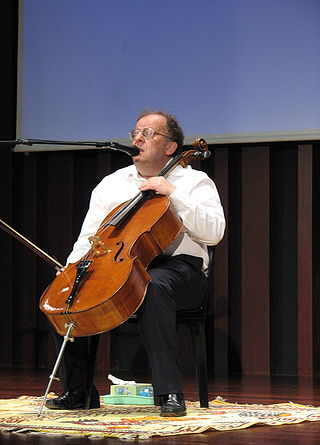
Beat Richner was a Swiss pediatrician, cellist and founder of children's hospitals in Cambodia. He created the Kantha Bopha Foundation in Zurich in 1992 and became its head. Along with another expatriate, he oversaw and ran the predominantly Cambodian-manned hospitals. As both a cellist and a medical doctor, Richner was known by patients, audiences, and donors as "Beatocello".
Lyn St. James, American race car driver births

Lyn St. James is an American former race car driver. She competed in the IndyCar series, with eleven CART and five Indy Racing League starts to her name. St. James is one of nine women who have qualified for the Indianapolis 500, and became the first woman to win the Indianapolis 500 Rookie of the Year award. She also has two class victories at the 24 Hours of Daytona, and won the GTO class, partnering with Calvin Fish and Robby Gordon, at the 1990 12 Hours of Sebring. Additionally she has competed in endurance racing in Europe, including the 24 Hours of Le Mans and the 24 Hours of Nürburgring, at which her AMC Spirit AMX team placed first and second in class in 1979.
Yonatan Netanyahu, American-Israeli colonel (d. 1976) births

Yonatan "Yoni" Netanyahu was an American-born Israel Defense Forces (IDF) officer who commanded the elite commando unit Sayeret Matkal during Operation Entebbe, an operation to rescue hostages held at Entebbe Airport in Uganda in 1976. The mission was successful, with 102 of the 106 hostages rescued, but Netanyahu was killed in action—the only IDF fatality during the operation.
Werner von Blomberg, German field marshal (b. 1878) deaths
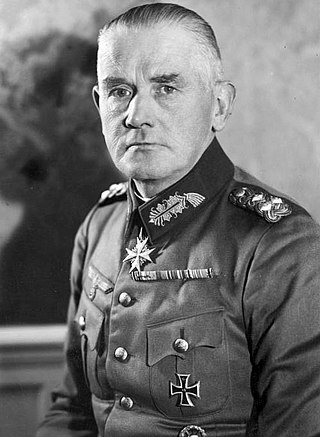
Werner Eduard Fritz von Blomberg was a German General Staff officer and the first Minister of War in Adolf Hitler's government. After serving on the Western Front in World War I, Blomberg was appointed chief of the Truppenamt during the Weimar Republic. Following the Nazis' rise to power, he was named Minister of War and Commander-in-Chief of the German Armed Forces. In this capacity, Blomberg played a central role in Germany's military build-up during the years leading to World War II. However, by 20 January 1938, he was forced to resign after his rivals, Hermann Göring and Heinrich Himmler, presented Hitler with evidence that his wife had posed in the past for pornographic photos.
Anatoly Fomenko, Russian mathematician and academic births
Anatoly Timofeevich Fomenko is a Soviet and Russian conspiracy theorist, mathematician, professor at Moscow State University, well-known as a topologist, and a member of the Russian Academy of Sciences. He is the author of a fictitious pseudoscientific history known as New Chronology, based on works of Russian-Soviet writer Nikolai Alexandrovich Morozov. He is also a member of the Russian Academy of Natural Sciences (1991).
Terence Burns, Baron Burns, English economist and academic births

Terence Burns, Baron Burns, sometimes known as Terry Burns, is a British economist, made a life peer in 1998 for his services as former Chief Economic Advisor and Permanent Secretary to HM Treasury. He served as Chairman of Ofcom from 2018 to 2020, and is currently a senior adviser to Santander UK, non-executive Chairman of Glas Cymru, and a non-executive director of Pearson Group plc. He is also President of the National Institute of Economic and Social Research, President of the Society of Business Economists, ex Chairman of the Governing Body of the Royal Academy of Music, and ex Chairman of the Monteverdi Choir and Orchestra. On 5 November 2009 he was announced chairman Designate of Channel Four Television Corporation, succeeding Luke Johnson, who retired on 27 January 2010 following six years in the post.
Stephen Vincent Benét, American poet, short story writer, and novelist (b. 1898) deaths

Stephen Vincent Benét was an American poet, short story writer, and novelist. He is best known for his book-length narrative poem of the American Civil War, John Brown's Body (1928), for which he received the Pulitzer Prize for Poetry, and for the short stories "The Devil and Daniel Webster" (1936) and "By the Waters of Babylon" (1937). In 2009, Library of America selected his story "The King of the Cats" (1929) for inclusion in its two-century retrospective of American Fantastic Tales, edited by Peter Straub.
Dave Cutler, American computer scientist and engineer births

David Neil Cutler Sr. is an American software engineer. He developed several computer operating systems, namely Microsoft's Windows NT, and Digital Equipment Corporation's RSX-11M, VAXELN, and VMS.
Mahmoud Darwish, Palestinian poet and author (d. 2008) births

Mahmoud Darwish was a Palestinian poet and author who was regarded as the Palestinian national poet. He won numerous awards for his works. Darwish used Palestine as a metaphor for the loss of Eden, birth and resurrection, and the anguish of dispossession and exile. He has been described as incarnating and reflecting "the tradition of the political poet in Islam, the man of action whose action is poetry." He also served as an editor for several literary magazines in Palestine.
Scatman John, American singer-songwriter (d. 1999) births
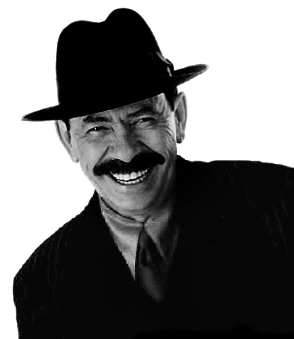
John Paul Larkin, known professionally as Scatman John, was an American musician. A prolific jazz pianist and vocalist for several decades, he rose to prominence during the 1990s through his fusion of scat singing and dance music. He recorded five albums, which were released between 1986 and 2001.
Donella Meadows, American environmentalist, author, and academic (d. 2001) births
Donella Hager "Dana" Meadows was an American environmental scientist, educator, and writer. She is best known as lead author of the books The Limits to Growth and Thinking In Systems: A Primer.
Neil Sedaka, American singer-songwriter and pianist births
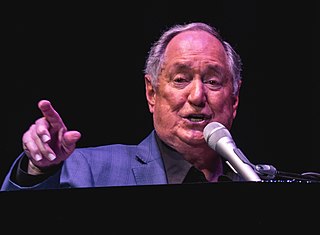
Neil Sedaka is an American singer-songwriter and pianist. Since his music career began in 1957, he has sold millions of records worldwide and has written or co-written over 500 songs for himself and other artists, collaborating mostly with lyricists Howard "Howie" Greenfield and Phil Cody.
Robert Gammage, American captain and politician (d. 2012) births
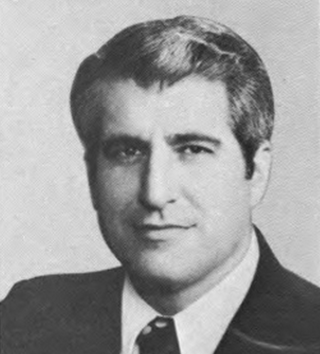
Robert Alton "Bob" Gammage was a Texas politician, having served as a Democrat in the Texas House of Representatives, the Texas State Senate, and the United States House of Representatives.
Clarence Darrow, American lawyer and author (b. 1857) deaths

Clarence Seward Darrow was an American lawyer who became famous in the early 20th century for his involvement in the Leopold and Loeb murder trial and the Scopes "Monkey" Trial. He was a leading member of the American Civil Liberties Union, and a prominent advocate for Georgist economic reform.
Francis Bell, New Zealand lawyer and politician, 20th Prime Minister of New Zealand (b. 1851) deaths

Sir Francis Henry Dillon Bell was a New Zealand lawyer and politician who served as the 20th prime minister of New Zealand from 14 to 30 May 1925. He was the first New Zealand-born prime minister, holding office in a caretaker capacity following the death of William Massey.

The prime minister of New Zealand is the head of government of New Zealand. The incumbent prime minister, Jacinda Ardern, leader of the New Zealand Labour Party, took office on 26 October 2017.
David Nobbs, English author and screenwriter (d. 2015) births
David Gordon Nobbs was an English comedy writer, best known for writing the 1970s television series The Fall and Rise of Reginald Perrin, adapted from his own novels.
Mahdi Elmandjra, Moroccan economist and sociologist (d. 2014) births

Mahdi Elmandjra was a Moroccan futurologist, economist and sociologist. He is one of the founders of the International Federation for Future Studies (Futuribles). He predicted a number of events, the most important of which was the clash of civilisations in his book "The first civilisation war" in 1992, that is, before Samuel Huntington, who used the same concept in his book "The clash of civilisations" issued in 1996. Mahdi Elmandjra also predicted the occurrence of the "Arab Spring", which he referred to in his writings under the name of "Intifada".
Gero von Wilpert, German author and academic (d. 2009) births
Gero von Wilpert was a German author, a senior lecturer in German at the University of New South Wales and, from 1980, Professor of German at the University of Sydney.
Zbigniew Messner, Polish economist and politician, 9th Prime Minister of the Republic of Poland (d. 2014) births

Zbigniew Stefan Messner was a Communist economist and politician in Poland. His ancestors were of German Polish descent who had assimilated into Polish society. In 1972, he became Professor of Karol Adamiecki University of Economics in Katowice. He was a member of the Central Committee of the Polish United Workers' Party from 1981 to 1988, Deputy Prime Minister from 1983 to 1985, and 53rd Prime Minister from 1985 to 1988.
This article lists the prime ministers of Poland. The Prime Minister of Poland is the leader of the cabinet and the head of government of Poland.
Carlos Roberto Reina, Honduran lawyer and politician, President of Honduras (d. 2003) births

Carlos Roberto Reina Idiáquez was a Honduran politician, lawyer and diplomat who served as the President of Honduras from 1994 to 1998. He was a member of the Honduran Liberal Party.

The president of Honduras officially known as the President of the Republic of Honduras, is the head of state and head of government of Honduras, and the Commander-in-chief of the Armed Forces. According to the 1982 Constitution of Honduras, the Government of Honduras consists of three branches: Executive, Legislative and Judicial. The president is the head of the Executive branch, their primary duty being to "Execute and enforce the Constitution, treaties and conventions, laws and other legal dispositions." The President is directly elected for a four year term.
Roy Haynes, American drummer and composer births

Roy Owen Haynes is an American jazz drummer. He is among the most recorded drummers in jazz. In a career lasting over 80 years, he has played swing, bebop, jazz fusion, avant-garde jazz and is considered a pioneer of jazz drumming. "Snap Crackle" was a nickname given to him in the 1950s.
Dimitrios Ioannidis, Greek general (d. 2010) births
Dimitrios Ioannidis, also known as Dimitris Ioannidis and as The Invisible Dictator, was a Greek military officer and one of the leading figures in the junta that ruled the country from 1967 to 1974. Ioannidis was considered a "purist and a moralist, a type of Greek Gaddafi".
Al Jaffee, American cartoonist births
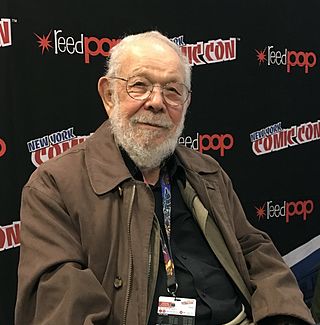
Allan Jaffee is an American cartoonist. He is notable for his work in the satirical magazine Mad, including his trademark feature, the Mad Fold-in. Jaffee was a regular contributor to the magazine for 65 years and is its longest-running contributor. In a 2010 interview, Jaffee said, "Serious people my age are dead."
Jenny Twitchell Kempton, American opera singer and educator (b. 1835) deaths

Jane Elizabeth Kempton was an American contralto opera solo singer who had an active career spanning over fifty years starting in 1850. She sang in hundreds of performances across the United States and Europe during her long career.
Ralph J. Roberts, American businessman, co-founded Comcast (d. 2015) births

Ralph Joel Roberts was an American businessman who was the founder of Comcast, serving as its CEO for 46 years. In 2011 he served as founder and chairman emeritus of Comcast's board of directors until his death.

Comcast Corporation, headquartered in Philadelphia, is the largest American multinational telecommunications conglomerate. It is the second-largest broadcasting and cable television company in the world by revenue, the largest pay-TV company, the largest cable TV company and largest home Internet service provider in the United States, and the nation's third-largest home telephone service provider. It provides services to U.S. residential and commercial customers in 40 states and the District of Columbia. As the parent company of the international media company NBCUniversal since 2011, Comcast is a producer of feature films for theatrical exhibition, and over-the-air and cable television programming.
Lindy Boggs, American educator and politician, 5th United States Ambassador to the Holy See (d. 2013) births

Marie Corinne Morrison Claiborne Boggs was a politician who served as a member of the U.S. House of Representatives and later as United States Ambassador to the Holy See. She was the first woman elected to Congress from Louisiana. She was also a permanent chairwoman of the 1976 Democratic National Convention, which met in New York City to nominate the Carter-Mondale ticket. She was the first woman to preside over a major party convention.

The ambassador of the United States to the Holy See is the official representative of the United States of America to the Holy See, the leadership of the Catholic Church. The official representation began with the formal opening of diplomatic relations with the Holy See by President Ronald Reagan and Pope John Paul II in 1984.
Jacque Fresco, American engineer and academic (d. 2017) births

Jacque Fresco was an American futurist and self-described social engineer. Self-taught, he worked in a variety of positions related to industrial design.
W. O. Mitchell, Canadian author and playwright (d. 1998) births

William Ormond Mitchell, was a Canadian writer and broadcaster. His "best-loved" novel is Who Has Seen the Wind (1947), which portrays life on the Canadian Prairies from the point of view of a small boy and sold almost a million copies in Canada. As a broadcaster, he is known for his radio series Jake and the Kid, which aired on CBC Radio between 1950 and 1956 and was also about life on the Prairies.
Edward O'Hare, American lieutenant and pilot, Medal of Honor recipient (d. 1943) births
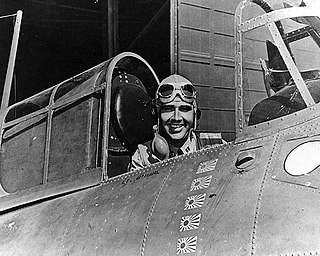
Lieutenant Commander Edward Henry O'Hare was an American naval aviator of the United States Navy, who on February 20, 1942, became the Navy's first fighter ace of the war when he single-handedly attacked a formation of nine heavy bombers approaching his aircraft carrier. Even though he had a limited amount of ammunition, he was credited with shooting down five enemy bombers and became the first naval aviator recipient of the Medal of Honor in World War II.

The Medal of Honor (MOH) is the United States Armed Forces' highest military decoration and is awarded to recognize American soldiers, sailors, marines, airmen, guardians and coast guardsmen who have distinguished themselves by acts of valor. The medal is normally awarded by the president of the United States, but as it is presented "in the name of the United States Congress", it is sometimes erroneously referred to as the "Congressional Medal of Honor".
William J. Casey, American politician, 13th Director of Central Intelligence (d. 1987) births
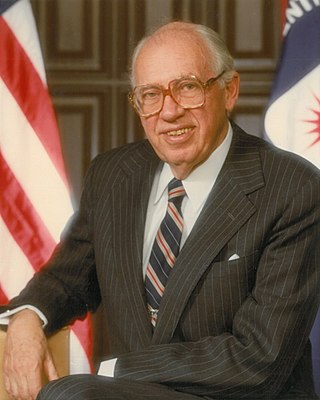
William Joseph Casey was the Director of Central Intelligence from 1981 to 1987. In this capacity he oversaw the entire United States Intelligence Community and personally directed the Central Intelligence Agency (CIA).

The director of central intelligence (DCI) was the head of the American Central Intelligence Agency from 1946 to 2005, acting as the principal intelligence advisor to the president of the United States and the United States National Security Council, as well as the coordinator of intelligence activities among and between the various US intelligence agencies.
Sergey Mikhalkov, Russian author and playwright (d. 2009) births
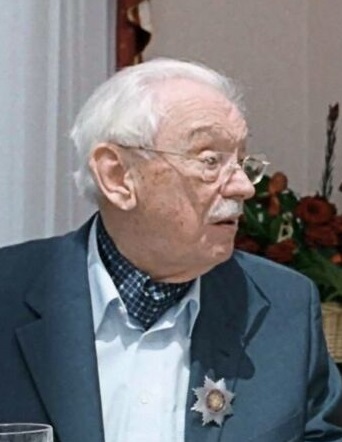
Sergey Vladimirovich Mikhalkov was a Soviet and Russian author of children's books and satirical fables. He wrote the lyrics for the Soviet and Russian national anthems.
Eugène-Étienne Taché, Canadian engineer and architect, designed the Parliament Building (b. 1836) deaths
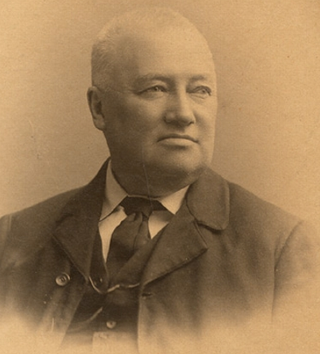
Eugène-Étienne Taché, ISO was a French Canadian surveyor, civil engineer, illustrator and architect. He devised Quebec's provincial coat-of-arms and motto Je me souviens.
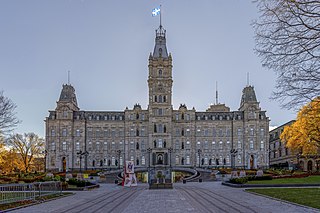
The Parliament Building of Quebec is an eight-floor structure and is home to the National Assembly of Quebec, located in Quebec City, Quebec, Canada. The Parliament Building was designed by architect Eugène-Étienne Taché in a Second Empire style and built between 1877 and 1886, in the heart of Quebec's Parliament Hill. The National Assembly first met there on March 27, 1884, even as the building was fully completed only two years later, on April 8, 1886. In 1910s-1930s, the government has built several adjacent buildings to expand its office spaces, creating a parliamentary complex, of which the Parliament Building is the main edifice. The government office, is a successor of several earlier buildings, the earliest of which was built in 1620 and among which there were two other parliament houses that served as legislatures from 1791.
José Ardévol, Cuban composer and conductor (d. 1981) births
José Ardévol was a Cuban composer and conductor of Spanish derivation.
L. Ron Hubbard, American author (d. 1986) births

Lafayette Ronald Hubbard was an American author, primarily of science fiction and fantasy stories, who is best known for having founded the Church of Scientology. In 1950, Hubbard authored Dianetics: The Modern Science of Mental Health and established a series of organizations to promote Dianetics. In 1952, Hubbard lost the rights to Dianetics in bankruptcy proceedings, and he subsequently founded Scientology. Thereafter, Hubbard oversaw the growth of the Church of Scientology into a worldwide organization.
Sammy Kaye, American saxophonist, songwriter, and bandleader (d. 1987) births

Sammy Kaye was an American bandleader and songwriter, whose tag line, "Swing and Sway with Sammy Kaye", became one of the most famous of the Big Band Era. The expression springs from his first hit single in 1937, "Swing and Sway". His signature tune was "Harbor Lights", a number-one hit from late 1950.
Kemal Tahir, Turkish journalist and author (d. 1973) births
Kemal Tahir was a prominent Turkish novelist and intellectual. Tahir spent 13 years of his life imprisoned for political reasons and wrote some of his most important novels during this time.
Walter Annenberg, American publisher, philanthropist, and diplomat, United States Ambassador to the United Kingdom (d. 2002) births

Walter Hubert Annenberg was an American businessman, investor, philanthropist, and diplomat. Annenberg owned and operated Triangle Publications, which included ownership of The Philadelphia Inquirer, TV Guide, the Daily Racing Form and Seventeen magazine. He was appointed by President Richard Nixon as United States Ambassador to the United Kingdom, where he served from 1969 to 1974.

The United States ambassador to the United Kingdom is the official representative of the president of the United States and the American government to the monarch and government of the United Kingdom. The position is held by Jane D. Hartley, who presented her credentials to Queen Elizabeth II on July 19, 2022.
Myrtle Bachelder, American chemist and Women's Army Corps officer (d. 1997) births

Myrtle Claire Bachelder was an American chemist and Women's Army Corps officer, who is noted for her secret work on the Manhattan Project atomic bomb program, and for the development of techniques in the chemistry of metals.
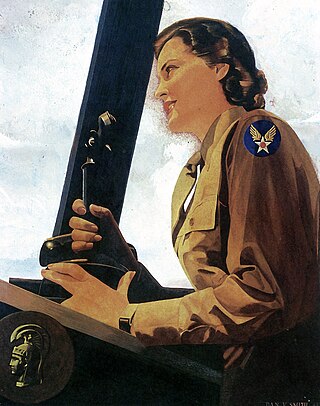
The Women's Army Corps (WAC) was the women's branch of the United States Army. It was created as an auxiliary unit, the Women's Army Auxiliary Corps (WAAC) on 15 May 1942 and converted to an active duty status in the Army of the United States as the WAC on 1 July 1943. Its first director was Colonel Oveta Culp Hobby. The WAC was disbanded in 1978, and all units were integrated with male units.
Dorothy Tangney, Australian politician (d. 1985) births
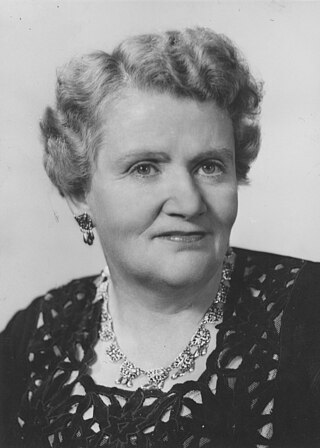
Dame Dorothy Margaret Tangney DBE was an Australian politician. She was a member of the Australian Labor Party (ALP) and served as a Senator for Western Australia from 1943 to 1968. She was the first woman elected to the Senate and one of the first two women elected to federal parliament, along with Enid Lyons.
Susan B. Anthony, American activist (b. 1820) deaths
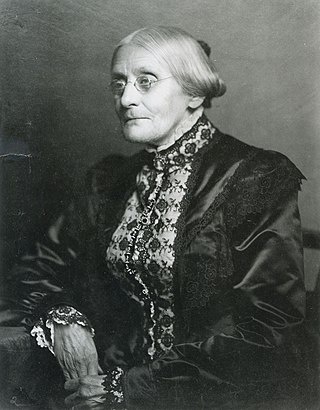
Susan B. Anthony was an American social reformer and women's rights activist who played a pivotal role in the women's suffrage movement. Born into a Quaker family committed to social equality, she collected anti-slavery petitions at the age of 17. In 1856, she became the New York state agent for the American Anti-Slavery Society.
Clifford Roach, Trinidadian cricketer and footballer (d. 1988) births

Clifford Archibald Roach was a West Indian cricketer who played in West Indies' first Test match in 1928. Two years later, he scored the West Indies' first century in Test matches, followed two matches later by the team's first double century. Roach played for Trinidad, but before having any great success at first-class level, he was chosen to tour England with a West Indies team in 1928 and scored over 1,000 runs. When England played in the West Indies in 1930, he recorded his ground-breaking centuries but had intermittent success at Test level afterwards. He toured Australia in 1930–31 and returned to England in 1933, when he once more passed 1,000 runs, but was dropped from the team in 1935. Within three years, he lost his place in the Trinidad team. Roach was generally inconsistent, but batted in an attacking and attractive style. Outside of cricket, he worked as a solicitor. Later in his life, he suffered from diabetes which necessitated the amputation of both his legs.
Hans Bellmer, German-French painter and sculptor (d. 1975) births
Hans Bellmer was a German artist, best known for the life-sized pubescent female dolls he produced in the mid-1930s. Historians of art and photography also consider him a Surrealist photographer.
Benjamin Harrison, American general and politician, 23rd President of the United States (b. 1833) deaths

Benjamin Harrison was an American lawyer and politician who served as the 23rd president of the United States from 1889 to 1893. He was a member of the Harrison family of Virginia–a grandson of the ninth president, William Henry Harrison, and a great-grandson of Benjamin Harrison V, a founding father.

The president of the United States (POTUS) is the head of state and head of government of the United States of America. The president directs the executive branch of the federal government and is the commander-in-chief of the United States Armed Forces.
Andrée Bosquet, Belgian painter (d. 1980) births

Andrée Bosquet (1900–1980) was a Belgian painter.
Giorgos Seferis, Greek poet and diplomat, Nobel Prize laureate (d. 1971) births

Giorgos or George Seferis, the pen name of Georgios Seferiades, was a Greek poet and diplomat. He was one of the most important Greek poets of the 20th century, and a Nobel laureate. He was a career diplomat in the Greek Foreign Service, culminating in his appointment as Ambassador to the UK, a post which he held from 1957 to 1962.

The Nobel Prize in Literature is a Swedish literature prize that is awarded annually, since 1901, to an author from any country who has, in the words of the will of Swedish industrialist Alfred Nobel, "in the field of literature, produced the most outstanding work in an idealistic direction". Though individual works are sometimes cited as being particularly noteworthy, the award is based on an author's body of work as a whole. The Swedish Academy decides who, if anyone, will receive the prize. The academy announces the name of the laureate in early October. It is one of the five Nobel Prizes established by the will of Alfred Nobel in 1895. Literature is traditionally the final award presented at the Nobel Prize ceremony. On some occasions the award has been postponed to the following year, most recently in 2018 as of May 2022.
John Hasbrouck Van Vleck, American physicist and mathematician, Nobel Prize laureate (d. 1980) births

John Hasbrouck Van Vleck was an American physicist and mathematician. He was co-awarded the Nobel Prize in Physics in 1977, for his contributions to the understanding of the behavior of electronic magnetism in solids.

The Nobel Prize in Physics is a yearly award given by the Royal Swedish Academy of Sciences for those who have made the most outstanding contributions for humankind in the field of physics. It is one of the five Nobel Prizes established by the will of Alfred Nobel in 1895 and awarded since 1901, the others being the Nobel Prize in Chemistry, Nobel Prize in Literature, Nobel Peace Prize, and Nobel Prize in Physiology or Medicine. Physics is traditionally the first award presented in the Nobel Prize ceremony.
Pancho Vladigerov, Bulgarian pianist and composer (d. 1978) births

Pancho Haralanov Vladigerov was a Bulgarian composer, pedagogue, and pianist.
Henry Hathaway, American director and producer (d. 1985) births

Henry Hathaway was an American film director and producer. He is best known as a director of Westerns, especially starring Randolph Scott and John Wayne. He directed Gary Cooper in seven films.
Yeghishe Charents, Armenian poet and activist (d. 1937) births

Yeghishe Charents was an Armenian poet, writer and public activist. Charents' literary subject matter ranged from his experiences in the First World War, socialist revolution, and frequently Armenia and Armenians. He is recognized as "the main poet of the 20th century" in Armenia.
Janet Flanner, American journalist and author (d. 1978) births
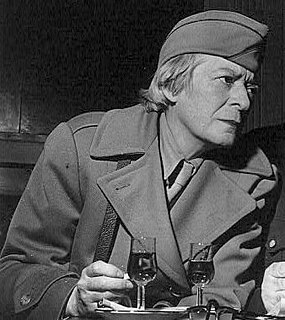
Janet Flanner was an American writer and pioneering narrative journalist who served as the Paris correspondent of The New Yorker magazine from 1925 until she retired in 1975. She wrote under the pen name "Genêt". She also published a single novel, The Cubical City, set in New York City. She was a prominent member of America's expatriate community living in Paris before WWII. Along with her longtime partner Solita Solano, Flanner was called "a defining force in the creative expat scene in Paris." She returned to New York during the war and split her time between there and Paris until her death in 1978.
Fritz Busch, German conductor and director (d. 1951) births

Fritz Busch was a German conductor.
Paul Morand, French author and diplomat (d. 1976) births

Paul Morand was a French author whose short stories and novellas were lauded for their style, wit and descriptive power. His most productive literary period was the interwar period of the 1920s and 1930s. He was much admired by the upper echelons of society and the artistic avant-garde who made him a cult favorite. He has been categorized as an early Modernist and Imagist.
Home Run Baker, American baseball player and manager (d. 1963) births

John Franklin "Home Run" Baker was an American professional baseball player. A third baseman, Baker played in Major League Baseball from 1908 to 1922 for the Philadelphia Athletics and New York Yankees. Although he never hit more than a dozen home runs in a season and hit only 96 homers in his career, Baker has been called the "original home run king of the majors".
Albert William Stevens, American captain and photographer (d. 1949) births

Albert William Stevens was an officer of the United States Army Air Corps, balloonist, and aerial photographer.
Giorgio Mitrovich, Maltese politician (b. 1795) deaths

Giorgio Mitrovich was a Maltese patriot and politician known for his role in the struggle for freedom of the press in Malta. He was one of the founders of the Comitato Generale Maltese, and he co-authored a petition in 1832 which led to a new constitution in 1835. He traveled to London multiple times to increase awareness of Maltese grievances, and his 1835 visit resulted in a Royal Commission recommending the abolition of press censorship, which was implemented in 1839. He was briefly elected to the Council of Government in the 1850s.
Hugh Walpole, New Zealand-English author and educator (d. 1941) births

Sir Hugh Seymour Walpole, CBE was an English novelist. He was the son of an Anglican clergyman, intended for a career in the church but drawn instead to writing. Among those who encouraged him were the authors Henry James and Arnold Bennett. His skill at scene-setting and vivid plots, as well as his high profile as a lecturer, brought him a large readership in the United Kingdom and North America. He was a best-selling author in the 1920s and 1930s but has been largely neglected since his death.
Leland Stanford Jr., American son of Leland Stanford (b. 1868) deaths

Leland Stanford Jr., known as Leland DeWitt Stanford until he was nine, was the only son of American industrialist and politician Leland Stanford and his wife Jane. Following his death from typhoid at age 15, he became the namesake of Stanford University.

Amasa Leland Stanford was an American industrialist and politician. A member of the Republican Party, he served as the 8th governor of California from 1862 to 1863 and represented California in the United States Senate from 1885 until his death in 1893. He and his wife Jane were also the founders of Stanford University, which they named after their late son. Prior to his political career, Stanford was a successful merchant and wholesaler who built his business empire after migrating to California during the Gold Rush. As president of the Central Pacific Railroad and later the Southern Pacific from 1885 to 1890, he held tremendous power in the region and a lasting impact on California.
Enrico Toselli, Italian pianist and composer (d. 1926) births

Enrico Toselli, Count of Montignoso, was an Italian pianist and composer. Born in Florence, he studied piano with Giovanni Sgambati and composition with Giuseppe Martucci and Reginaldo Grazzini. He embarked on a career as a concert pianist, playing in Italy, European capital cities, Alexandria and North America.
Alexander II of Russia (b. 1818) deaths
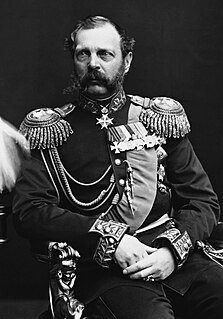
Alexander II was Emperor of Russia, King of Poland and Grand Duke of Finland from 2 March 1855 until his assassination.
Josef Gočár, Czech architect (d. 1945) births

Josef Gočár was a Czech architect. It was one of the founders of modern architecture in Czech Republic.
Adolf Anderssen, German mathematician and chess player (b. 1818) deaths

Karl Ernst Adolf Anderssen was a German chess master. He won the great international tournaments of 1851 and 1862, but lost matches to Paul Morphy in 1858, and to Wilhelm Steinitz in 1866. Accordingly, he is generally regarded as having been the world's leading chess player from 1851 to 1858, and leading active player from 1862 to 1866, although the title of World Chess Champion did not yet exist.
Ellery Harding Clark, American jumper, coach, and lawyer (d. 1949) births
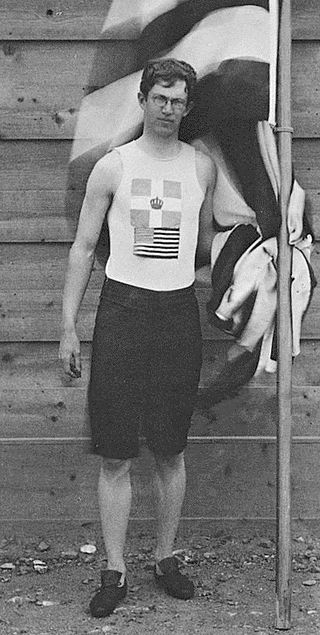
Ellery Harding Clark was an American track and field athlete and a writer. He was the first modern Olympic champion in high jump and long jump.
David Swinson Maynard, American physician, lawyer, and businessman (b. 1808) deaths

David Swinson "Doc" Maynard was an American pioneer, doctor, and businessman. He was one of Seattle's primary founders. He was an effective civic booster and, compared to other white settlers, a relative advocate of Native American rights. His friendship with Chief Seattle was important in the formation of the city of Seattle, and it was he who proposed the city be named for this important chief. Maynard was Seattle's first doctor, merchant prince, second lawyer, Sub-Indian Agent, Justice of the Peace, and architect of the Point Elliott Treaty of 1855.
William Glackens, American painter and illustrator (d. 1938) births
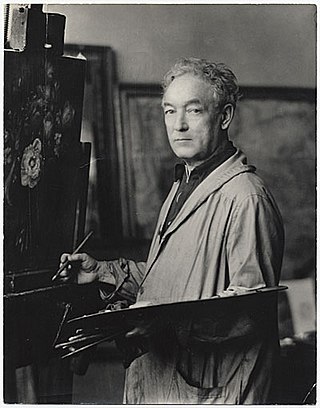
William James Glackens was an American realist painter and one of the founders of the Ashcan School, which rejected the formal boundaries of artistic beauty laid-down by the conservative National Academy of Design. He is also known for his work in helping Albert C. Barnes to acquire the European paintings that form the nucleus of the famed Barnes Foundation in Philadelphia. His dark-hued, vibrantly painted street scenes and depictions of daily life in pre-WW I New York and Paris first established his reputation as a major artist. His later work was brighter in tone and showed the strong influence of Renoir. During much of his career as a painter, Glackens also worked as an illustrator for newspapers and magazines in Philadelphia and New York City.
Alexej von Jawlensky, Russian-German painter (d. 1941) births
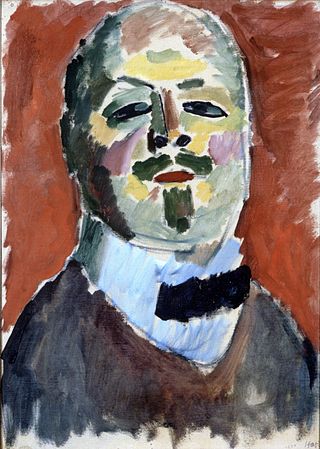
Alexej Georgewitsch von Jawlensky, surname also spelt as Yavlensky, was a Russian expressionist painter active in Germany. He was a key member of the New Munich Artist's Association, Der Blaue Reiter group and later the Die Blaue Vier.
Paul Prosper Henrys, French general (d. 1943) births

Paul Prosper Henrys was a French general.
Hugo Wolf, Slovene-Austrian composer (d. 1903) births
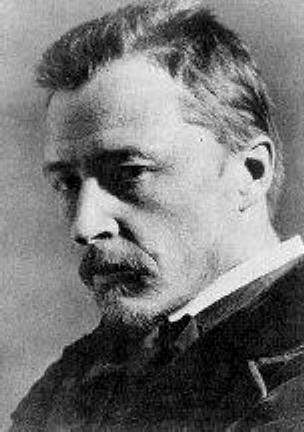
Hugo Philipp Jacob Wolf was an Austrian composer of Slovene origin, particularly noted for his art songs, or Lieder. He brought to this form a concentrated expressive intensity which was unique in late Romantic music, somewhat related to that of the Second Viennese School in concision but diverging greatly in technique.
B. H. Roberts, English-American historian and politician (d. 1933) births
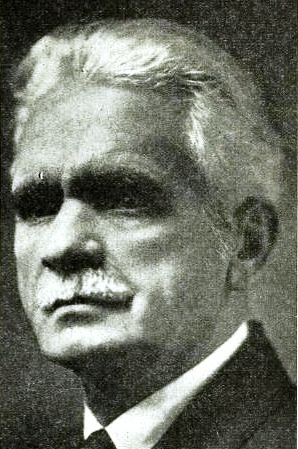
Brigham Henry Roberts was a historian, politician, and leader in the Church of Jesus Christ of Latter-day Saints. He edited the seven-volume History of the Church of Jesus Christ of Latter-day Saints and independently wrote the six-volume Comprehensive History of the Church of Jesus Christ of Latter-day Saints. Roberts also wrote Studies of the Book of Mormon—published posthumously—which discussed the validity of the Book of Mormon as an ancient record. Roberts was denied a seat as a member of United States Congress because of his practice of polygamy.
Percival Lowell, American astronomer and mathematician (d. 1916) births

Percival Lowell was an American businessman, author, mathematician, and astronomer who fueled speculation that there were canals on Mars, and furthered theories of a ninth planet within the Solar System. He founded the Lowell Observatory in Flagstaff, Arizona, and formed the beginning of the effort that led to the discovery of Pluto 14 years after his death.
Jean-Baptiste de Villèle, French politician, 6th Prime Minister of France (b. 1773) deaths
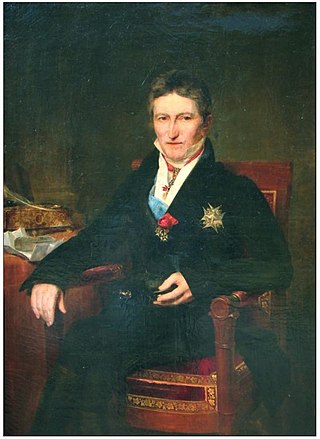
Jean-Baptiste Guillaume Joseph Marie Anne Séraphin, 1st Count of Villèle, better known simply as Joseph de Villèle, was a French statesman. Several times Prime minister, he was a leader of the Ultra-royalist faction during the Bourbon Restoration.

The prime minister of France, officially the prime minister of the French Republic, is the head of government of the French Republic and the leader of the Council of Ministers.
Henry Shrapnel, English general (b. 1761) deaths
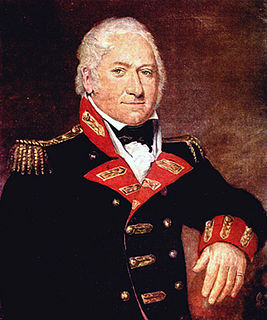
Lieutenant General Henry Shrapnel was a British Army officer whose name has entered the English language as the inventor of the shrapnel shell.
William Bradley, English lieutenant and cartographer (b. 1757) deaths
William Bradley was a British naval officer and cartographer who was one of the officers who participated in the First Fleet to Australia. During this expedition, Bradley undertook extensive surveys and became one of the first of the settlers to establish relations with the aborigines, with whom he struck up a dialogue and whose customs and nature he studied extensively. He later however fell out with his aboriginal contacts and instead undertook a mission to gather food which ended with an eleven-month stay on Norfolk Island after a shipwreck.
Hans Gude, Norwegian-German painter and academic (d. 1903) births

Hans Fredrik Gude was a Norwegian romanticist painter and is considered along with Johan Christian Dahl to be one of Norway's foremost landscape painters. He has been called a mainstay of Norwegian National Romanticism. He is associated with the Düsseldorf school of painting.
John Jervis, 1st Earl of St Vincent, English admiral and politician (b. 1735) deaths
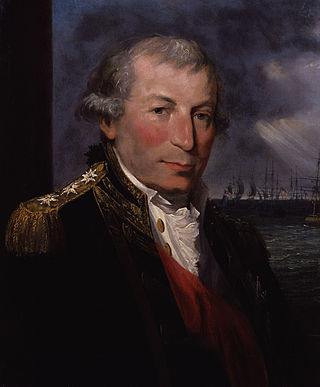
Admiral of the Fleet John Jervis, 1st Earl of St Vincent was an admiral in the Royal Navy and Member of Parliament in the United Kingdom. Jervis served throughout the latter half of the 18th century and into the 19th, and was an active commander during the Seven Years' War, American War of Independence, French Revolutionary War and the Napoleonic Wars. He is best known for his victory at the 1797 Battle of Cape Saint Vincent, from which he earned his titles, and as a patron of Horatio Nelson. Despite having a fierce reputation for discipline his crews had great affection for him, calling him Old Jarvie.
James Curtis Hepburn, American physician, linguist, and missionary (d. 1911) births

James Curtis Hepburn was an American physician, translator, educator, and lay Christian missionary. He is known for the Hepburn romanization system for transliteration of the Japanese language into the Latin alphabet, which he popularized in his Japanese–English dictionary.
Christian VII of Denmark (b. 1749) deaths

Christian VII was a monarch of the House of Oldenburg who was King of Denmark–Norway and Duke of Schleswig and Holstein from 1766 until his death in 1808. For his motto he chose: "Gloria ex amore patriae".
Mustafa Reşid Pasha, Ottoman politician, 212th Grand Vizier of the Ottoman Empire (d. 1858) births

Koca Mustafa Reşid Pasha was an Ottoman statesman and diplomat, known best as the chief architect behind the Ottoman government reforms known as Tanzimat.

The grand vizier of the Ottoman Empire was the de facto prime minister of the sultan in the Ottoman Empire, with the absolute power of attorney and, in principle, removable only by the sultan himself in the classical period, before the Tanzimat reforms, or until the 1908 Revolution. He held the imperial seal and could summon all other viziers to attend to affairs of the state in the Imperial Council; the viziers in conference were called "kubbe viziers" in reference to their meeting place, the Kubbealtı ('under-the-dome') in Topkapı Palace. His offices were located at the Sublime Porte.
Nana Fadnavis, Indian minister and politician (b. 1742) deaths

Nana Fadnavis, born Balaji Janardan Bhanu, was an influential minister and statesman of the Maratha Empire during the Peshwa administration in Pune, India. James Grant Duff states that he was called "the Maratha Machiavelli" by the Europeans.
Abigail Fillmore, American wife of Millard Fillmore, 14th First Lady of the United States (d. 1853) births

Abigail Fillmore, wife of President Millard Fillmore, was the First Lady of the United States from 1850 to 1853. She began work as a schoolteacher at the age of 16, where she took on Millard Fillmore, who was two years her junior, as a student. She continued her teaching work after their marriage in 1826 until the birth of her son Millard Powers Fillmore in 1828. She lived in Buffalo, New York while her husband advanced his political career in Albany, New York and Washington, D.C. She would occasionally join him in these cities, becoming involved in local social life. She became the Second Lady of the United States in 1849 after her husband was elected Vice President on the Whig Party presidential ticket, and she became First Lady of the United States in 1850 after her husband succeeded to the presidency.

Millard Fillmore was the 13th president of the United States, serving from 1850 to 1853, the last to be a member of the Whig Party while in the White House. A former member of the U.S. House of Representatives from Upstate New York, Fillmore was elected as the 12th vice president of the United States in 1848, and succeeded to the presidency in July 1850 upon the death of U.S. President Zachary Taylor. Fillmore was instrumental in the passing of the Compromise of 1850, a bargain that led to a brief truce in the battle over the expansion of slavery. He failed to win the Whig nomination for president in 1852 but gained the endorsement of the nativist Know Nothing Party four years later and finished third in the 1856 presidential election.

The first lady of the United States (FLOTUS) is the title held by the hostess of the White House, usually the wife of the president of the United States, concurrent with the president's term in office. Although the first lady's role has never been codified or officially defined, she figures prominently in the political and social life of the United States. Since the early 20th century, the first lady has been assisted by official staff, now known as the Office of the First Lady and headquartered in the East Wing of the White House.
Karl Friedrich Schinkel, German painter and architect, designed the Konzerthaus Berlin (d. 1841) births
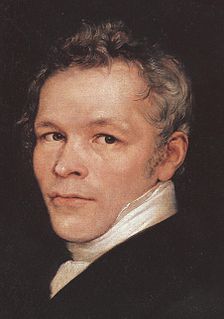
Karl Friedrich Schinkel was a Prussian architect, city planner and painter who also designed furniture and stage sets. Schinkel was one of the most prominent architects of Germany and designed both neoclassical and neogothic buildings. His most famous buildings are found in and around Berlin.
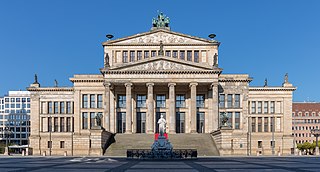
The Konzerthaus Berlin is a concert hall in Berlin, the home of the Konzerthausorchester Berlin. Situated on the Gendarmenmarkt square in the central Mitte district of the city, it was originally built as a theater. It initially operated from 1818 to 1821 under the name of the Schauspielhaus Berlin, then as the Theater am Gendarmenmarkt and Komödie. It became a concert hall after the Second World War, and its name changed to its present one in 1994.
Daniel Lambert, English animal breeder (d. 1809) births

Daniel Lambert was a gaol keeper and animal breeder from Leicester, England, famous for his unusually large size. After serving four years as an apprentice at an engraving and die casting works in Birmingham, he returned to Leicester around 1788 and succeeded his father as keeper of Leicester's gaol. He was a keen sportsman and extremely strong; on one occasion he fought a bear in the streets of Leicester. He was an expert in sporting animals, widely respected for his expertise with dogs, horses and fighting cocks.
Charles Grey, 2nd Earl Grey, English politician, Prime Minister of the United Kingdom (d. 1845) births

Charles Grey, 2nd Earl Grey, known as Viscount Howick between 1806 and 1807, was a British Whig politician who served as Prime Minister of the United Kingdom from 1830 to 1834. He was a member of the noble House of Grey.

The prime minister of the United Kingdom is the head of government of the United Kingdom. The prime minister advises the sovereign on the exercise of much of the royal prerogative, chairs the Cabinet and selects its ministers. As modern prime ministers hold office by virtue of their ability to command the confidence of the House of Commons, they sit as members of Parliament.
Guillaume Brune, French general and diplomat (d. 1815) births

Guillaume Marie-Anne Brune, 1st Count Brune was a French military commander, Marshal of the Empire, and political figure who served during the French Revolutionary Wars and the Napoleonic Wars.
Joseph II, Holy Roman Emperor (d. 1790) births

Joseph II was Holy Roman Emperor from August 1765 and sole ruler of the Habsburg lands from November 29, 1780 until his death. He was the eldest son of Empress Maria Theresa and her husband, Emperor Francis I, and the brother of Marie Antoinette, Maria Carolina of Austria and Maria Amalia, Duchess of Parma. He was thus the first ruler in the Austrian dominions of the union of the Houses of Habsburg and Lorraine, styled Habsburg-Lorraine.
Charles Bonnet, Swiss historian and author (d. 1793) births

Charles Bonnet was a Genevan naturalist and philosophical writer. He is responsible for coining the term phyllotaxis to describe the arrangement of leaves on a plant. He was among the first to notice parthenogenetic reproduction in aphids and established that insects respired through their spiracles. He was among the first to use the term "evolution" in a biological context. Deaf from an early age, he also suffered from failing eyesight and had to make use of assistants in later life to help in his research.
John Griffin, 4th Baron Howard de Walden, English field marshal and politician, Lord Lieutenant of Essex (d. 1797) births

Field Marshal John Griffin Griffin, 4th Baron Howard de Walden, 1st Baron Braybrooke, , KB, of Audley End in Essex, was a British nobleman and soldier. He served as a junior officer with the Pragmatic Army in the Netherlands and Germany during the War of the Austrian Succession. After changing his surname to Griffin in 1749, he commanded a brigade of at least four battalions at the Battle of Corbach in July 1760 during the Seven Years' War. He also commanded a brigade at the Battle of Warburg and was wounded at the Battle of Kloster Kampen.
This is a list of people who have served as Lord Lieutenant of Essex. Since 1688, all the Lord Lieutenants have also been Custos Rotulorum of Essex.John Petre, 1st Baron Petre John de Vere, 16th Earl of Oxford 1558–? Robert Dudley, 1st Earl of Leicester 3 July 1585 – 4 September 1588 William Cecil, 1st Baron Burghley 31 December 1588 – 4 August 1598 vacant Robert Radclyffe, 5th Earl of Sussex 26 August 1603 – 5 February 1629 jointly with Robert Rich, 2nd Earl of Warwick 8 September 1625 – 1642 jointly with Richard Weston, 1st Earl of Portland 5 February 1629 – 31 March 1635 and William Maynard, 1st Baron Maynard 6 August 1635 – 17 December 1640 and James Hay, 2nd Earl of Carlisle 8 January 1641 – 1642 Interregnum Aubrey de Vere, 20th Earl of Oxford 13 August 1660 – 1687 jointly with Christopher Monck, 2nd Duke of Albemarle 30 November 1675 – 1687 Thomas Petre, 6th Baron Petre 18 February 1688 – 1688 Aubrey de Vere, 20th Earl of Oxford 25 October 1688 – 12 March 1703 Francis North, 2nd Baron Guilford 23 March 1703 – 1705 Richard Savage, 4th Earl Rivers 16 April 1705 – 18 August 1712 Henry St John, 1st Viscount Bolingbroke 24 October 1712 – 1714 Henry Howard, 6th Earl of Suffolk 7 January 1715 – 19 September 1718 Charles Howard, 7th Earl of Suffolk 10 December 1718 – 9 February 1722 Henry O'Brien, 8th Earl of Thomond 2 April 1722 – 20 April 1741 Benjamin Mildmay, 1st Earl Fitzwalter 7 May 1741 – 29 February 1756 William Nassau de Zuylestein, 4th Earl of Rochford 3 April 1756 – 28 September 1781 John Waldegrave, 3rd Earl Waldegrave 7 November 1781 – 22 October 1784 John Griffin, 4th Baron Howard de Walden 17 November 1784 – 25 May 1797 Richard Griffin, 2nd Baron Braybrooke 27 January 1798 – 28 February 1825 Henry Maynard, 3rd Viscount Maynard 19 April 1825 – 19 May 1865 Thomas Crosbie William Trevor, 22nd Baron Dacre 5 October 1865 – 1869 Sir Thomas Burch Western, 1st Baronet 11 May 1869 – 30 May 1873 Chichester Parkinson-Fortescue, 1st Baron Carlingford 4 September 1873 – 1892 John Strutt, 3rd Baron Rayleigh 2 February 1892 – 1 August 1901 Francis Greville, 5th Earl of Warwick 1 August 1901 – 1919 Amelius Lockwood, 1st Baron Lambourne 11 February 1919 – 26 December 1928 Sir Richard Beale Colvin 31 January 1929 – 1936 Sir Francis Henry Douglas Charlton Whitmore, 1st Baronet 16 April 1936 – 1958 Sir John Ruggles-Brise, 2nd Baronet 6 September 1958 – 1978 Sir Andrew Lewis 1978–1992 Robin Neville, 10th Baron Braybrooke 3 August 1992 – October 2002 John Petre, 18th Baron Petre 16 December 2002 – 4 August 2017 Jennifer Tolhurst 5 August 2017 – present
Johann Friedrich Böttger, German chemist and potter (b. 1682) deaths

Johann Friedrich Böttger was a German alchemist. Böttger was born in Schleiz and died in Dresden. He is normally credited with being the first European to discover the secret of the creation of hard-paste porcelain in 1708, but it has also been claimed that English manufacturers or Ehrenfried Walther von Tschirnhaus produced porcelain first. Certainly, the Meissen factory, established 1710, was the first to produce porcelain in Europe in large quantities and since the recipe was kept a trade secret by Böttger for his company, experiments continued elsewhere throughout Europe.
Nicolas Boileau-Despréaux, French poet and critic (b. 1636) deaths

Nicolas Boileau-Despréaux, often known simply as Boileau, was a French poet and critic. He did much to reform the prevailing form of French poetry, in the same way that Blaise Pascal did to reform the prose. He was greatly influenced by Horace.
Michel Blavet, French flute player and composer (d. 1768) births
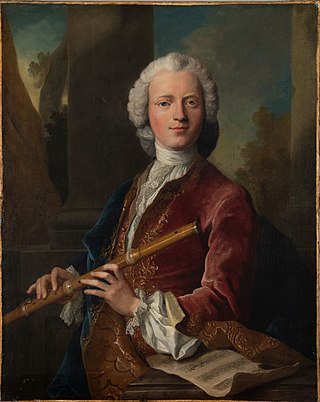
Michel Blavet was a French composer and flute virtuoso. Although Blavet taught himself to play almost every instrument, he specialized in the bassoon and the flute which he held to the left, the opposite of how most flutists hold theirs today.
Johann Wilhelm Weinmann, German botanist (d. 1741) births

Johann Wilhelm Weinmann, apothecary and botanist, is noted for his creation of the florilegium Phytanthoza iconographia between 1737 and 1745, an ambitious project which resulted in eight folio volumes with more than 1,000 hand-coloured engravings of several thousand plants. The work is thought to have inspired similar works, such as the Japanese medicinal work "Honzo Zufu" (1828) by Iwasaki Tsunemasa, and "Somoku-dzusetsu" (1856) by Yokusai Iinuma.
Richard Burbage, English actor (b. 1567) deaths
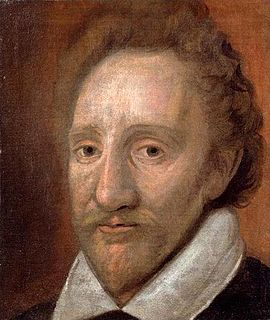
Richard Burbage was an English stage actor, widely considered to have been one of the most famous actors of the Globe Theatre and of his time. In addition to being a stage actor, he was also a theatre owner, entrepreneur, and painter. He was the younger brother of Cuthbert Burbage. They were both actors in drama. Burbage was a business associate and friend to William Shakespeare.
Innocent XII, pope of the Catholic Church (d. 1700) births

Pope Innocent XII, born Antonio Pignatelli, was head of the Catholic Church and ruler of the Papal States from 12 July 1691 to his death in September 1700.
Henry Cuffe, Politician (b. 1563) deaths
Sir Henry Cuffe was an English writer and politician, executed during the reign of Queen Elizabeth I of England, for treason.
John Berchmans, Belgian Jesuit scholastic and saint (d. 1621) births

John Berchmans was a Jesuit scholastic and is a saint in the Catholic Church. In 1615, the Jesuits opened a college at Mechelen and Berchmans was one of the first to enroll. His spiritual model was his fellow Jesuit Aloysius Gonzaga, and he was influenced by the example of the English Jesuit martyrs. Berchmans is the patron saint of altar servers, Jesuit scholastics, and students.
Georges de La Tour, French painter (probable; d. 1652) births
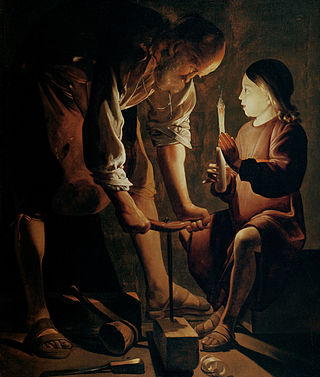
Georges de La Tour was a French Baroque painter, who spent most of his working life in the Duchy of Lorraine, which was temporarily absorbed into France between 1641 and 1648. He painted mostly religious chiaroscuro scenes lit by candlelight.
Michel de l'Hôpital, French politician (b. 1507) deaths
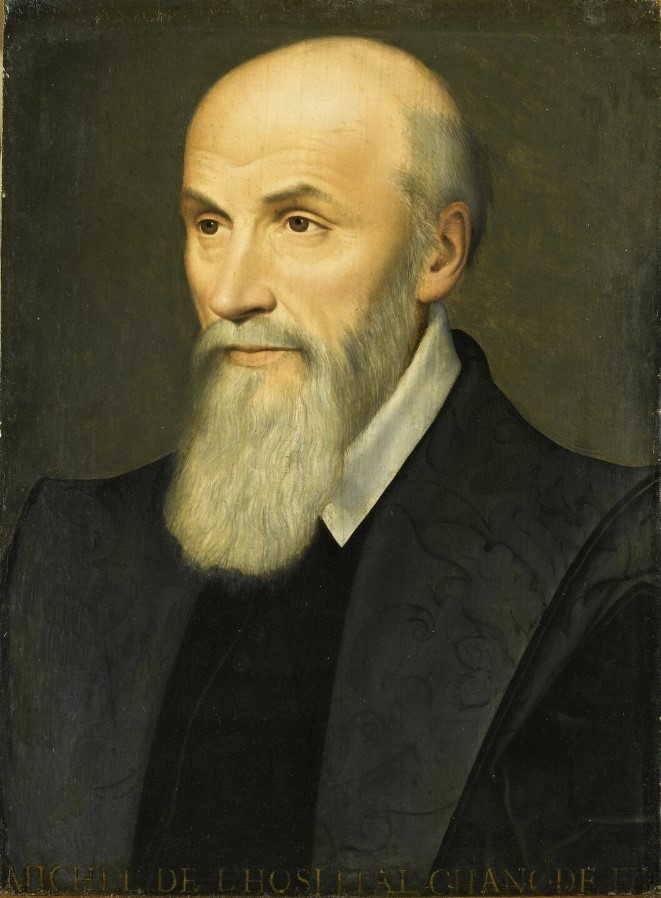
Michel de l'Hôpital was a French statesman.
William Louis, Count of Nassau-Dillenburg, Dutch count (d. 1620) births

William Louis of Nassau-Dillenburg was Count of Nassau-Dillenburg from 1606 to 1620, and stadtholder of Friesland, Groningen, and Drenthe.
Lazarus Spengler, German hymnwriter (d. 1534) births

Lazarus Spengler was a prominent supporter of Martin Luther and leader of the Protestant Reformation in Nuremberg, as well as a famous hymnwriter.
Shah Rukh, Timurid ruler of Persia and Transoxania (b. 1377) deaths

Shah Rukh or Shahrukh was the ruler of the Timurid Empire between 1405 and 1447.

The Timurid Empire, self-designated as Gurkani, was a Persianate Turco-Mongol empire that dominated Greater Iran in the early 15th century, comprising modern-day Iran, Iraq, Afghanistan, much of Central Asia, the South Caucasus, as well as most of contemporary Pakistan and parts of contemporary North India and Turkey.
Minye Kyawswa, Crown Prince of Ava (b. 1391) deaths

Minye Kyawswa was crown prince of Ava from 1406 to 1415, and commander-in-chief of Ava's military from 1410 to 1415. He is best remembered in Burmese history as the courageous general who waged the fiercest battles of the Forty Years' War (1385–1424) against King Razadarit of Hanthawaddy Pegu.

The Kingdom of Ava was the dominant kingdom that ruled upper Burma (Myanmar) from 1364 to 1555. Founded in 1365, the kingdom was the successor state to the petty kingdoms of Myinsaing, Pinya and Sagaing that had ruled central Burma since the collapse of the Pagan Empire in the late 13th century.
Louis I, Duke of Orléans (d. 1407) births

Louis I of Orléans was Duke of Orléans from 1392 to his death. He was also Duke of Touraine (1386–1392), Count of Valois (1386?–1406) Blois (1397–1407), Angoulême (1404–1407), Périgord (1400–1407) and Soissons (1404–07).
Henry of Almain, English knight (b. 1235) deaths
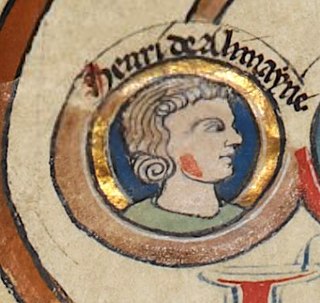
Henry of Almain, also called Henry of Cornwall, was the eldest son of Richard, Earl of Cornwall, afterwards King of the Romans, by his first wife Isabel Marshal. His surname is derived from a vowel shift in pronunciation of d'Allemagne ; he was so called by the elites of England because of his father's status as the elected German King of Almayne.
Mieszko III the Old, king of Poland (b. c. 1121) deaths

Mieszko III the Old, of the Piast dynasty, was Duke of Greater Poland from 1138 and High Duke of Poland, with interruptions, from 1173 until his death.
Christian feast days: Ansovinus

Saint Ansovinus was a bishop of Camerino, and is the patron saint of agriculture. His feast day is March 13.
Christian feast days: Gerald of Mayo

Gerald of Mayo is a saint of the Roman Catholic Church and Eastern Orthodox Church. Born in Northumbria, the son of an Anglo-Saxon king, he was one of the English monks at Lindisfarne who accompanied Colmán of Lindisfarne to Iona and then to Ireland. This occurred after the Synod of Whitby 664AD which decided against the Irish method of calculating the date for Easter. Colman was an ardent supporter of the Irish traditions; after the synod decided to adopt the Roman computation.
Christian feast days: James Theodore Holly (Episcopal Church (USA))

James Theodore Augustus Holly was the first African-American bishop in the Protestant Episcopal church, and spent most of his episcopal career as missionary bishop of Haiti.

The Episcopal Church, based in the United States with additional dioceses elsewhere, is a member church of the worldwide Anglican Communion. It is a mainline Protestant denomination and is divided into nine provinces. The presiding bishop of the Episcopal Church is Michael Bruce Curry, the first African-American bishop to serve in that position.
Christian feast days: Nicephorus

Nikephoros I or Nicephorus I was a Byzantine writer and patriarch of Constantinople from 12 April 806 to 13 March 815.
Christian feast days: Roderick

Saint Roderick was a Mozarab Catholic priest, venerated as one of the Martyrs of Córdoba. Tradition states that he was a Christian priest of Cabra who had two brothers: one was a Muslim, the other irreligious. Once, after his brothers began to fight one another, Roderick attempted to break up the fight. However, they turned on him instead and beat him.
Christian feast days: March 13 (Eastern Orthodox liturgics)

March 12 - Eastern Orthodox liturgical calendar - March 14
Kasuga Matsuri (Kasuga Grand Shrine, Nara, Japan)

Kasuga-taisha is a Shinto shrine in Nara, Nara Prefecture, Japan. It is the shrine of the Fujiwara family, established in 768 CE and rebuilt several times over the centuries. The interior is famous for its many bronze lanterns, as well as the many stone lanterns that lead up the shrine.
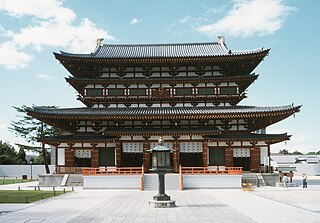
Nara is the capital city of Nara Prefecture, Japan. As of 2022, Nara has an estimated population of 367,353 according to World Population Review, making it the largest city in Nara Prefecture and sixth-largest in the Kansai region of Honshu. Nara is a core city located in the northern part of Nara Prefecture bordering the Kyoto Prefecture.
National Elephant Day (Thailand)
On 26 May 1998, the Thai government declared the 13th of March to annually be the Thai National Elephant Day or Chang Thai Day. The observance was suggested by the Asian Elephant Foundation of Thailand and submitted to the Coordinating Subcommittee for the Conservation of Thai Elephants. The date was chosen because the Royal Forest Department designated the white elephant as the national animal of Thailand on 13 March 1963.
Africa Scout Day

Scouts' Day or Guides' Day is a generic term for special days observed by members of the Scouting movement throughout the year. Some of these days have religious significance, while others may be a simple celebration of Scouting. Typically, it is a day when all members of Scouting will re-affirm the Scout Promise.